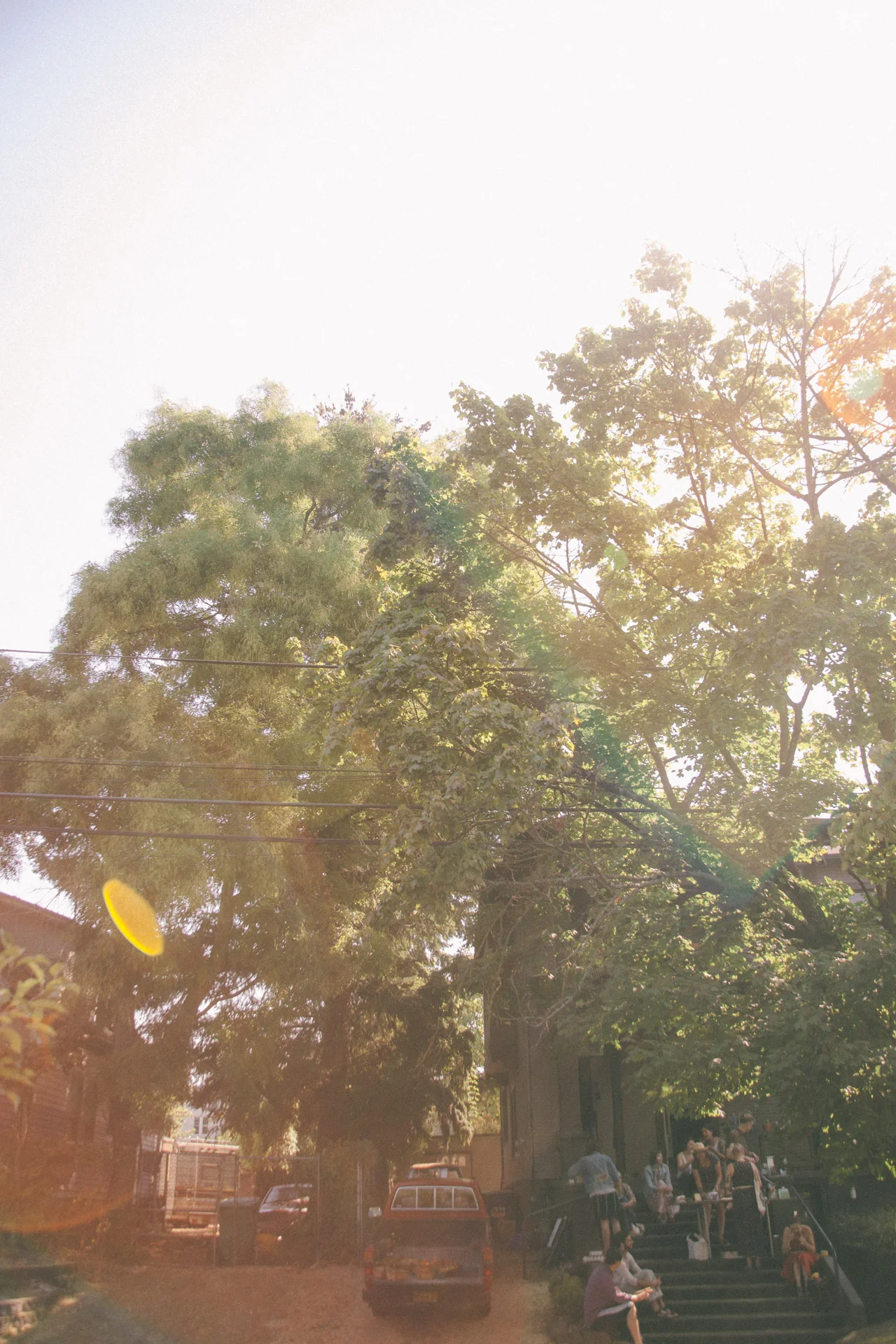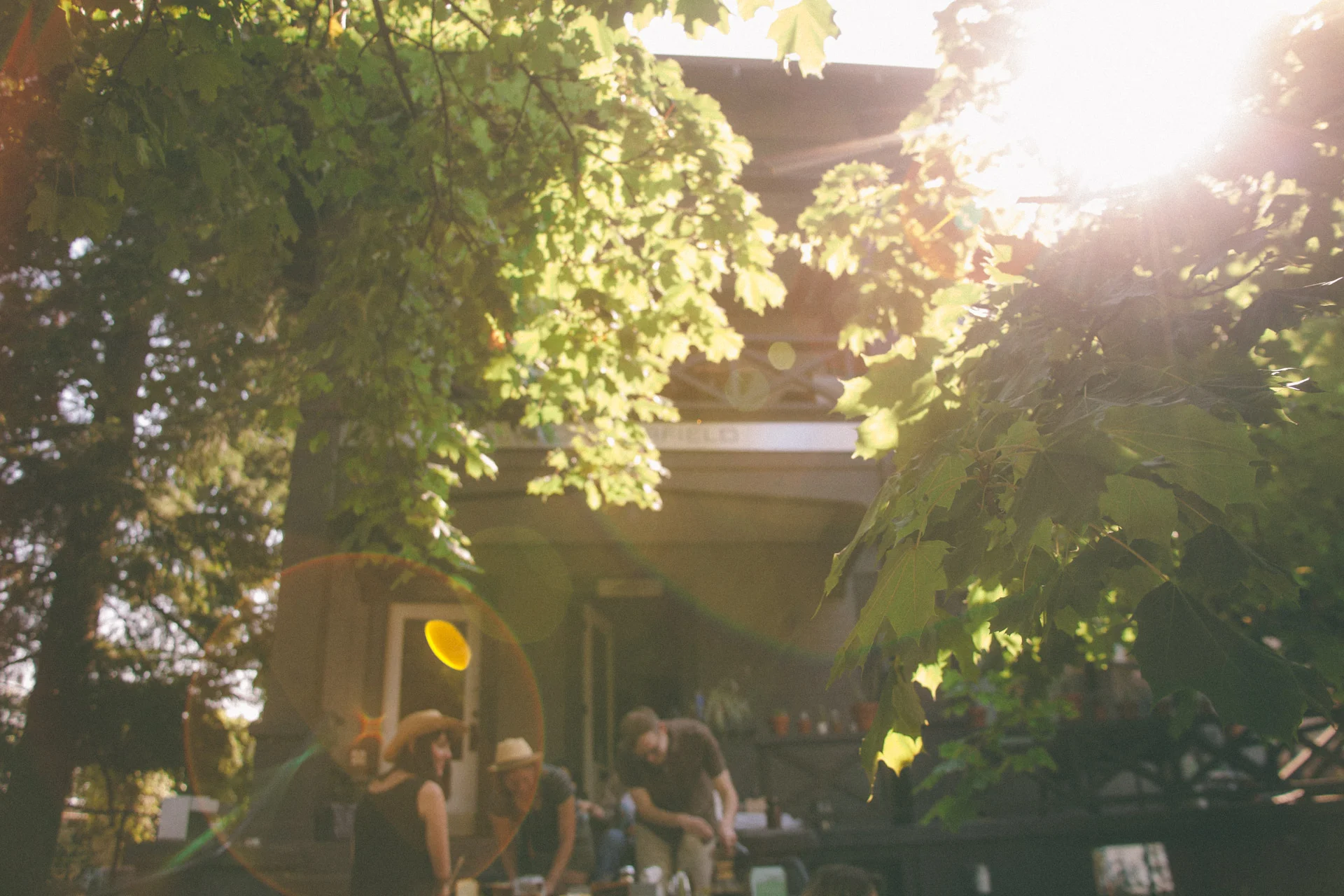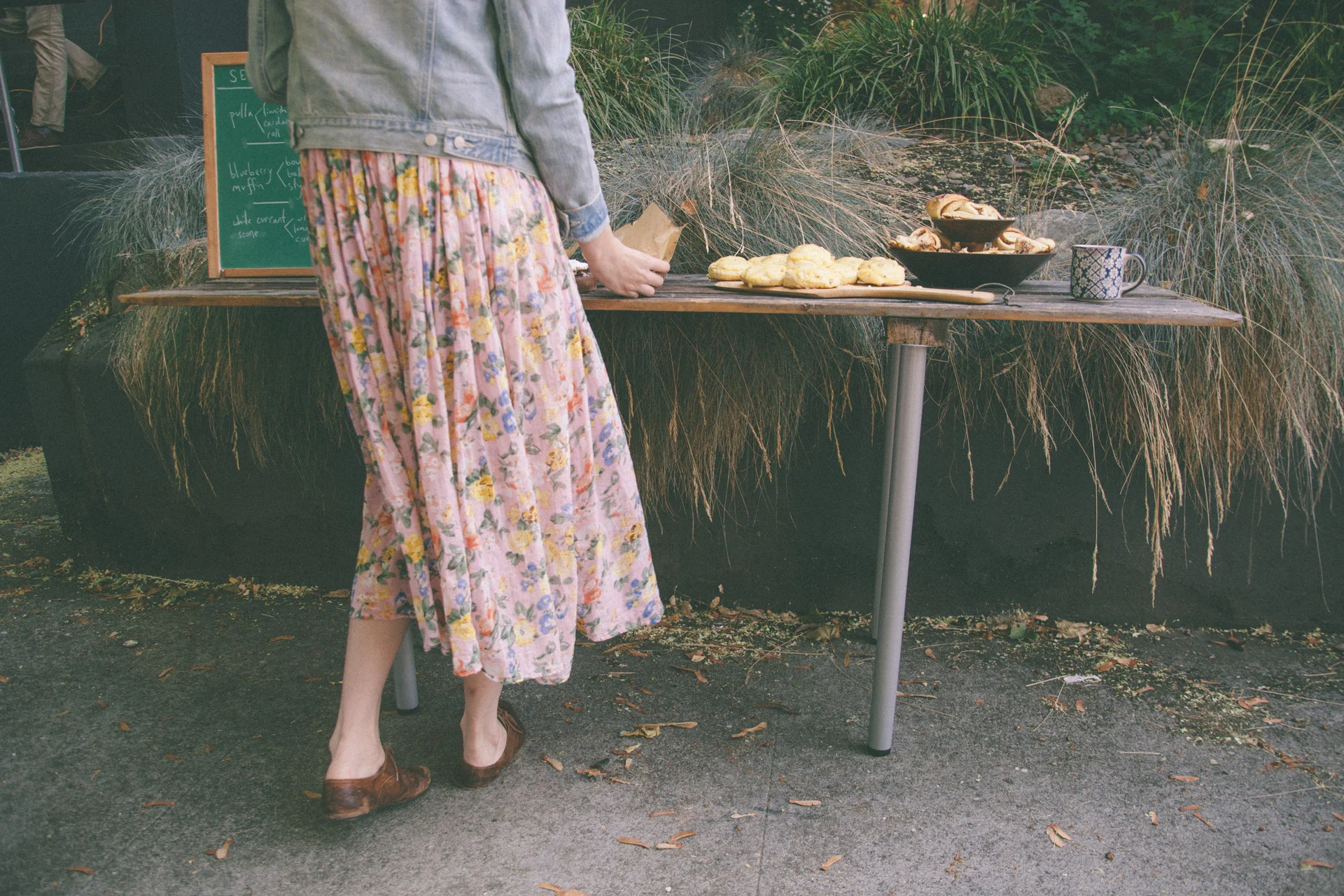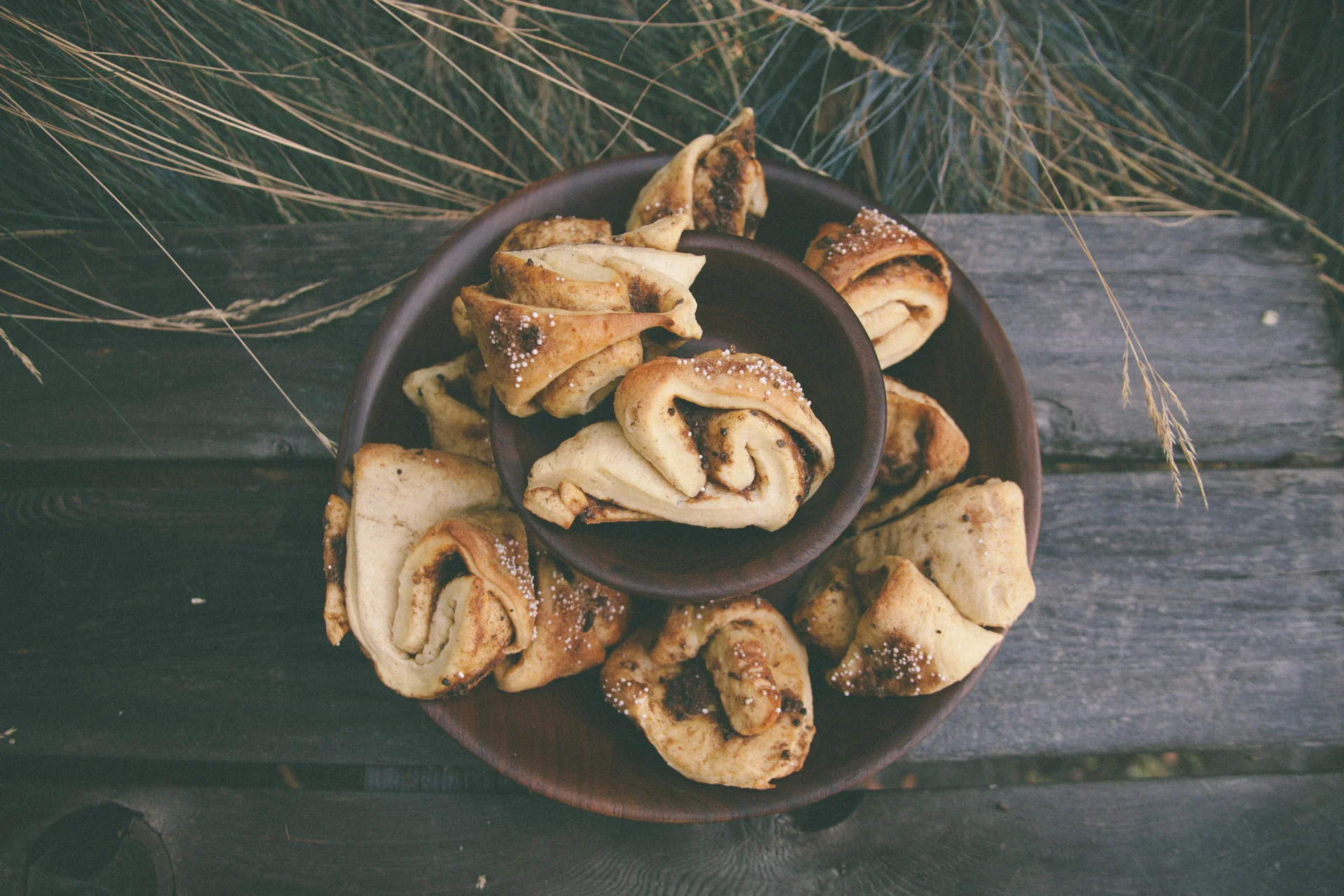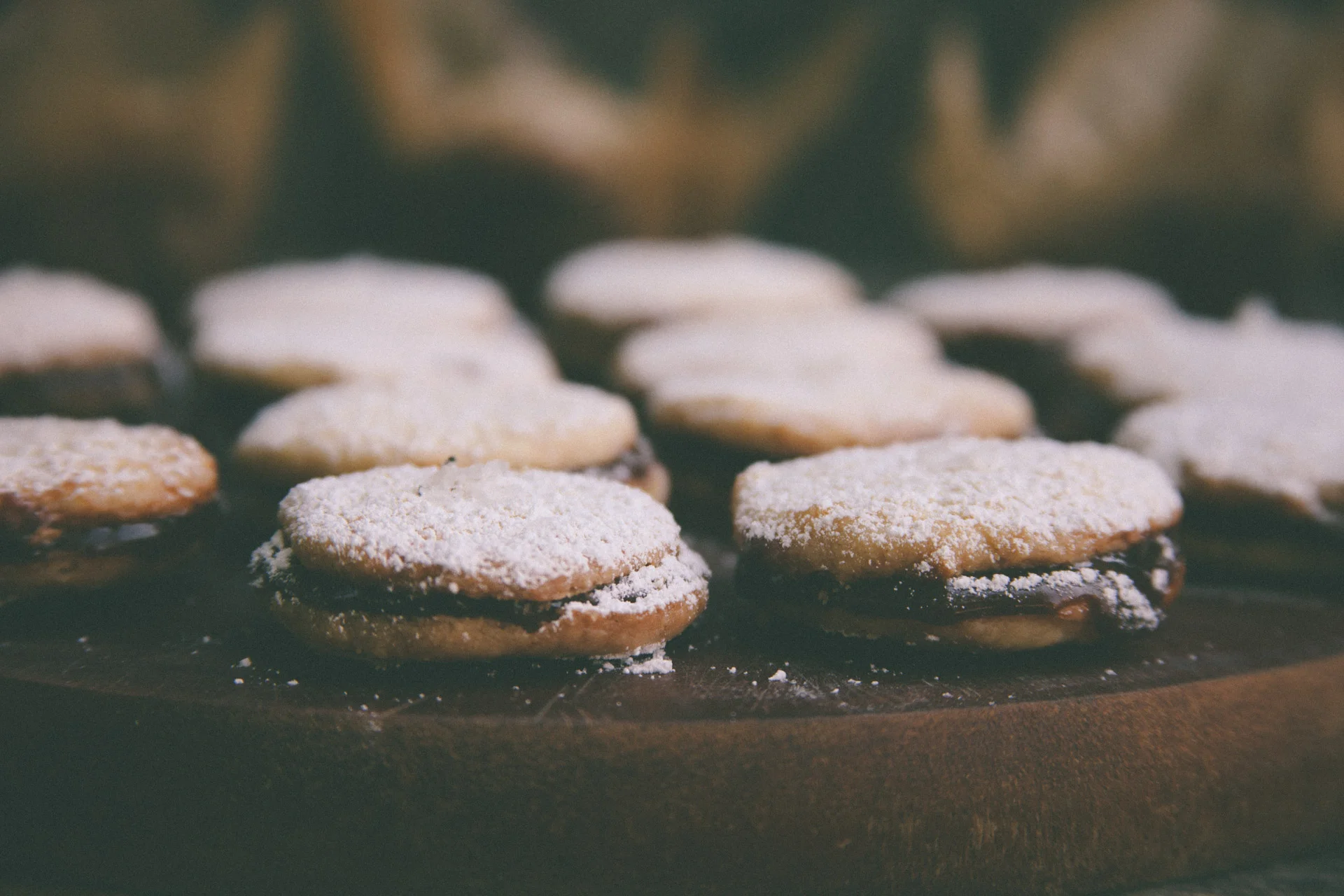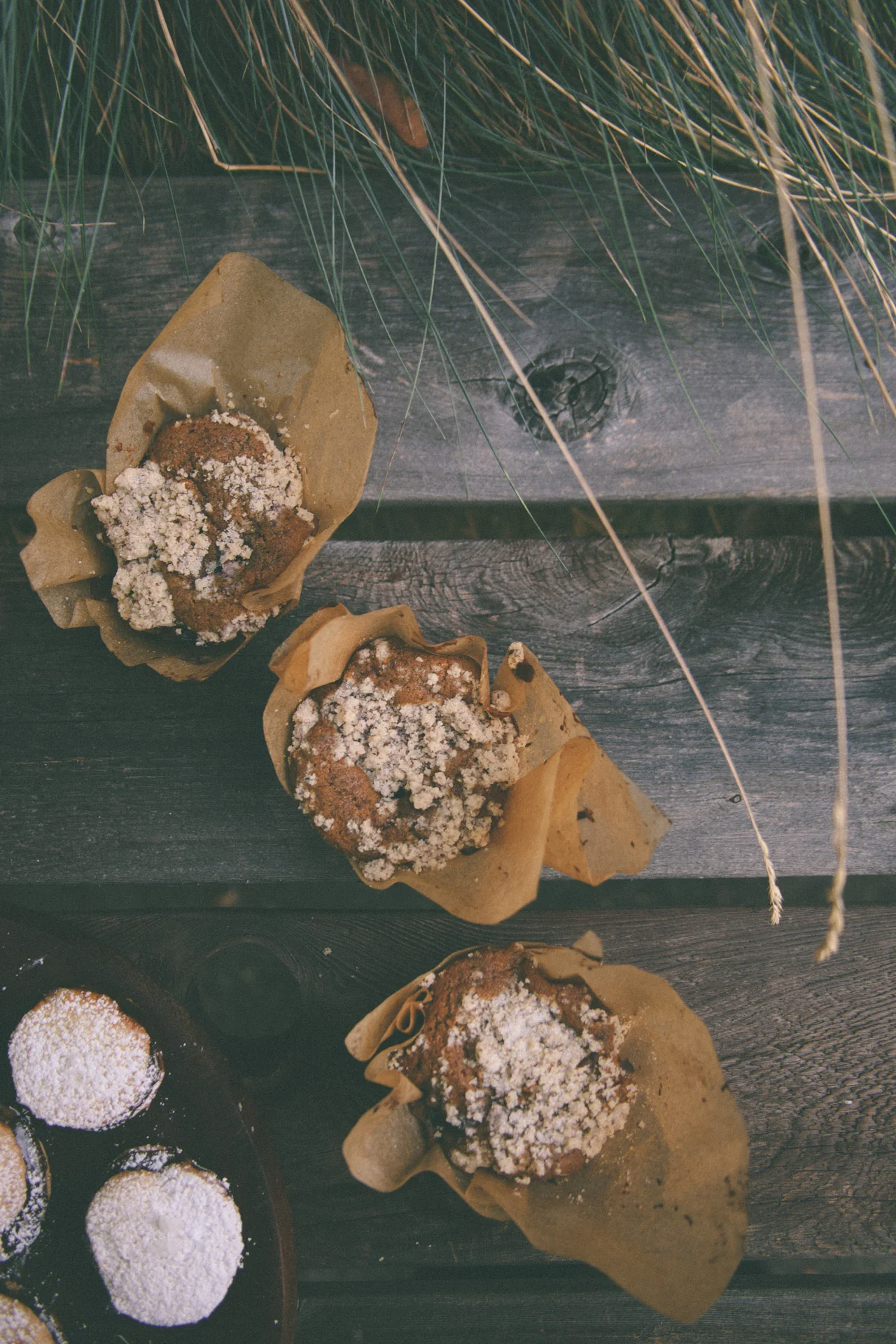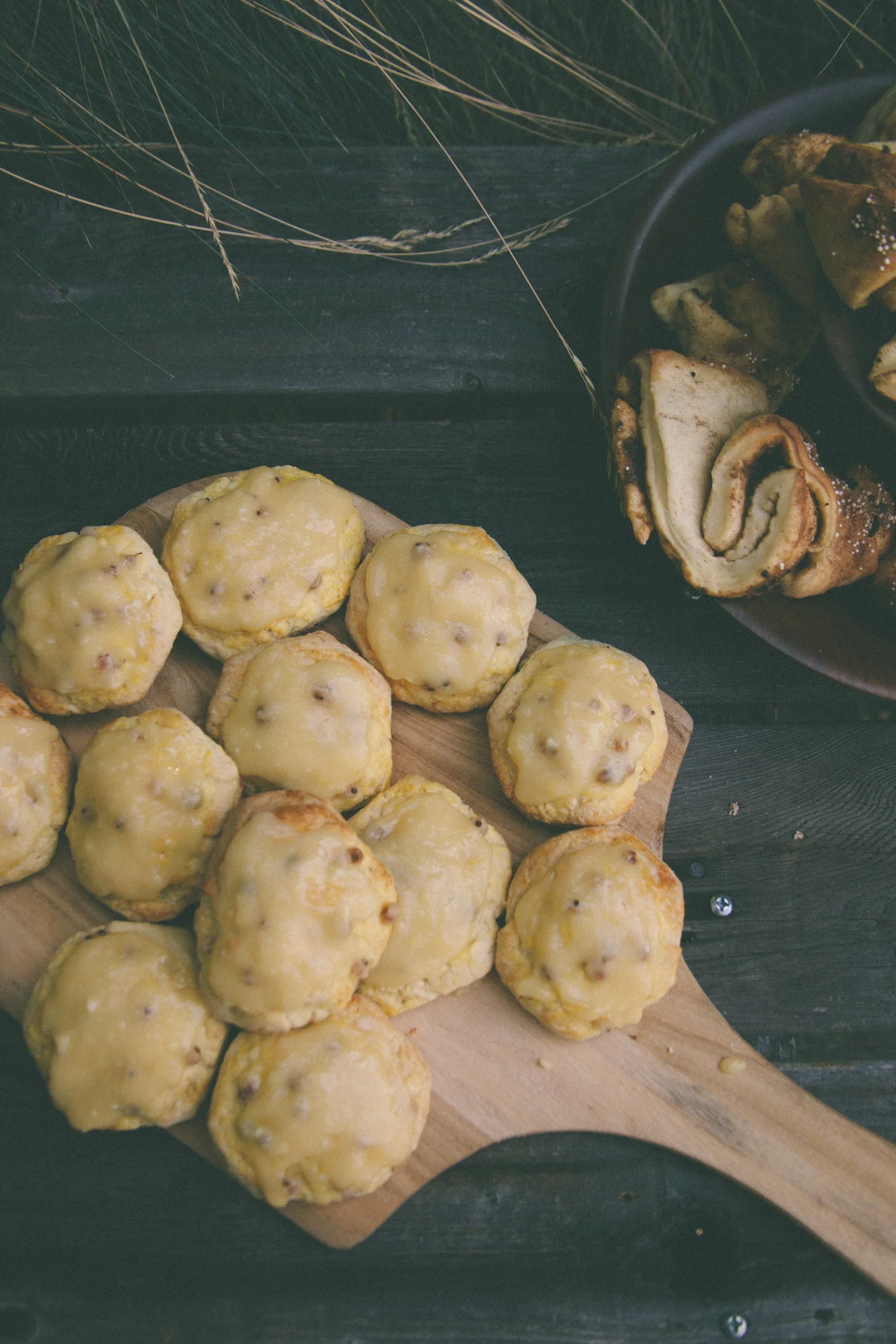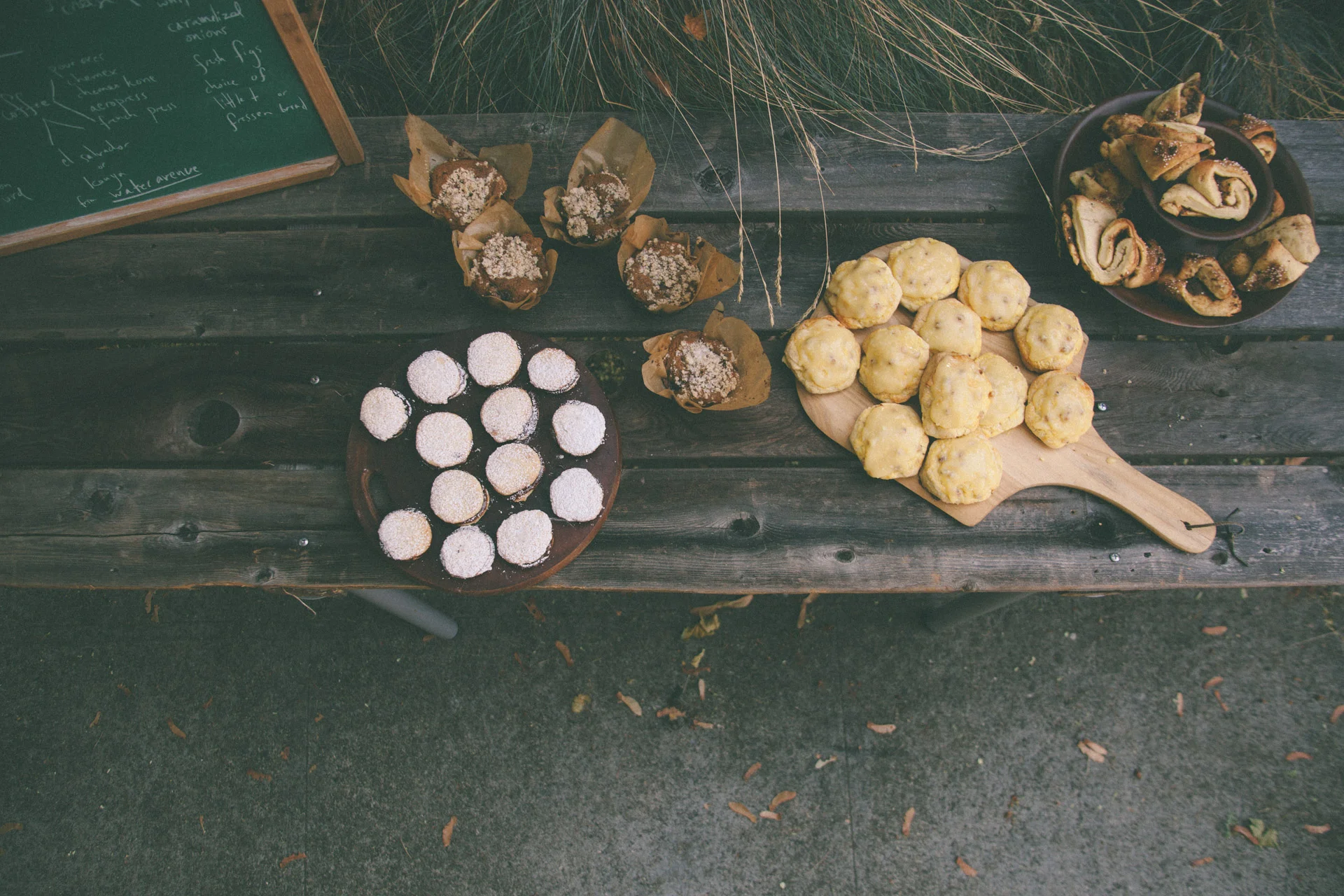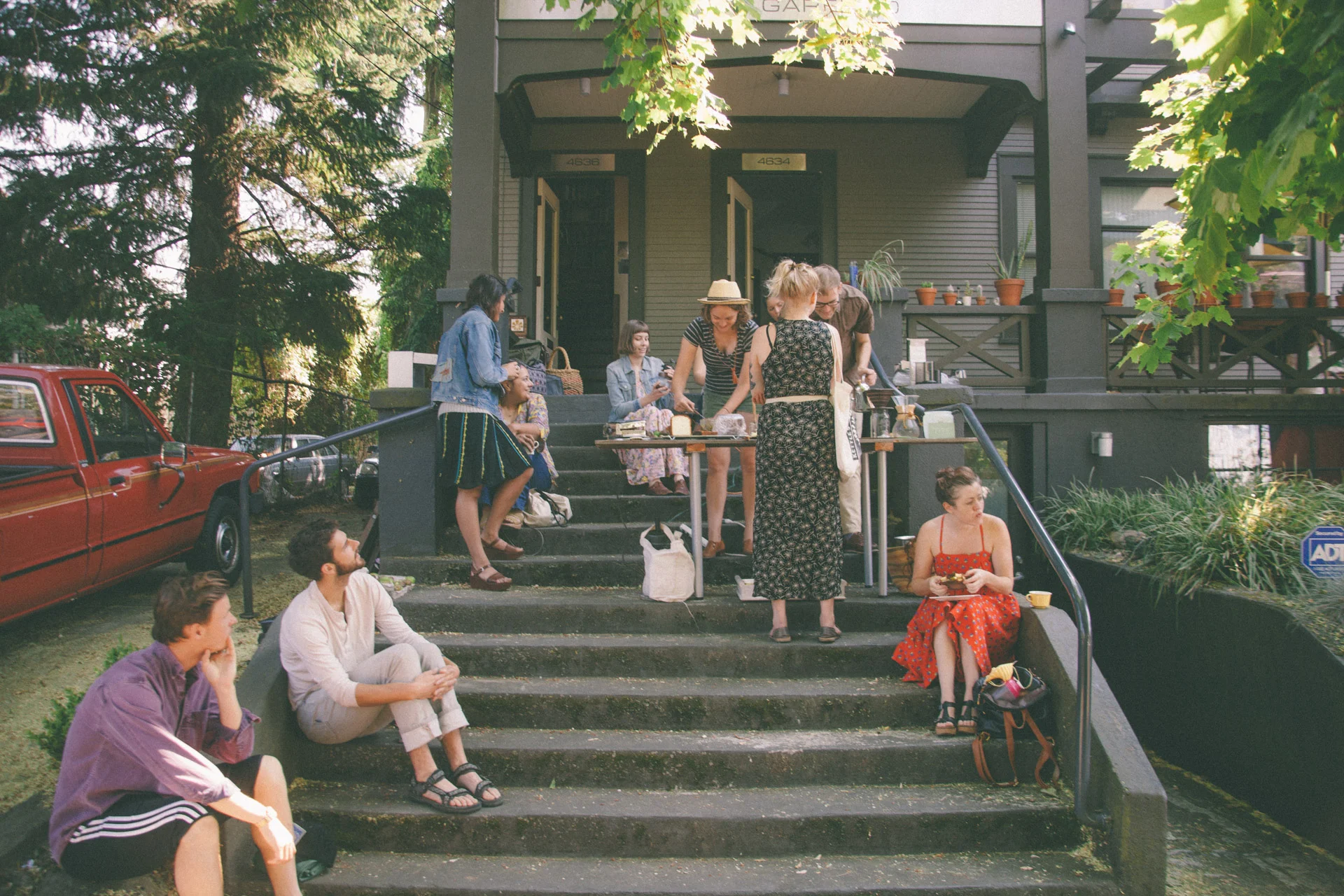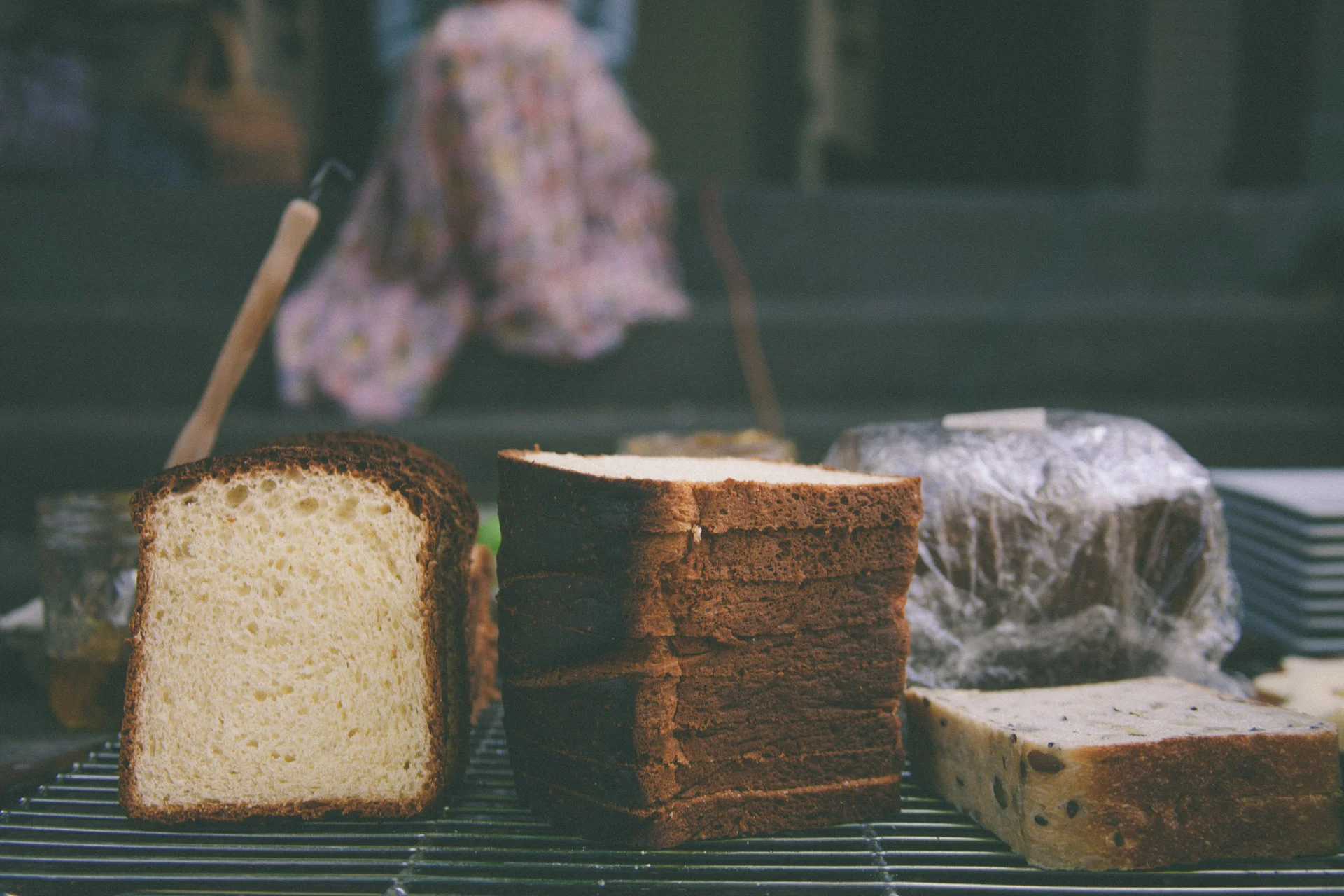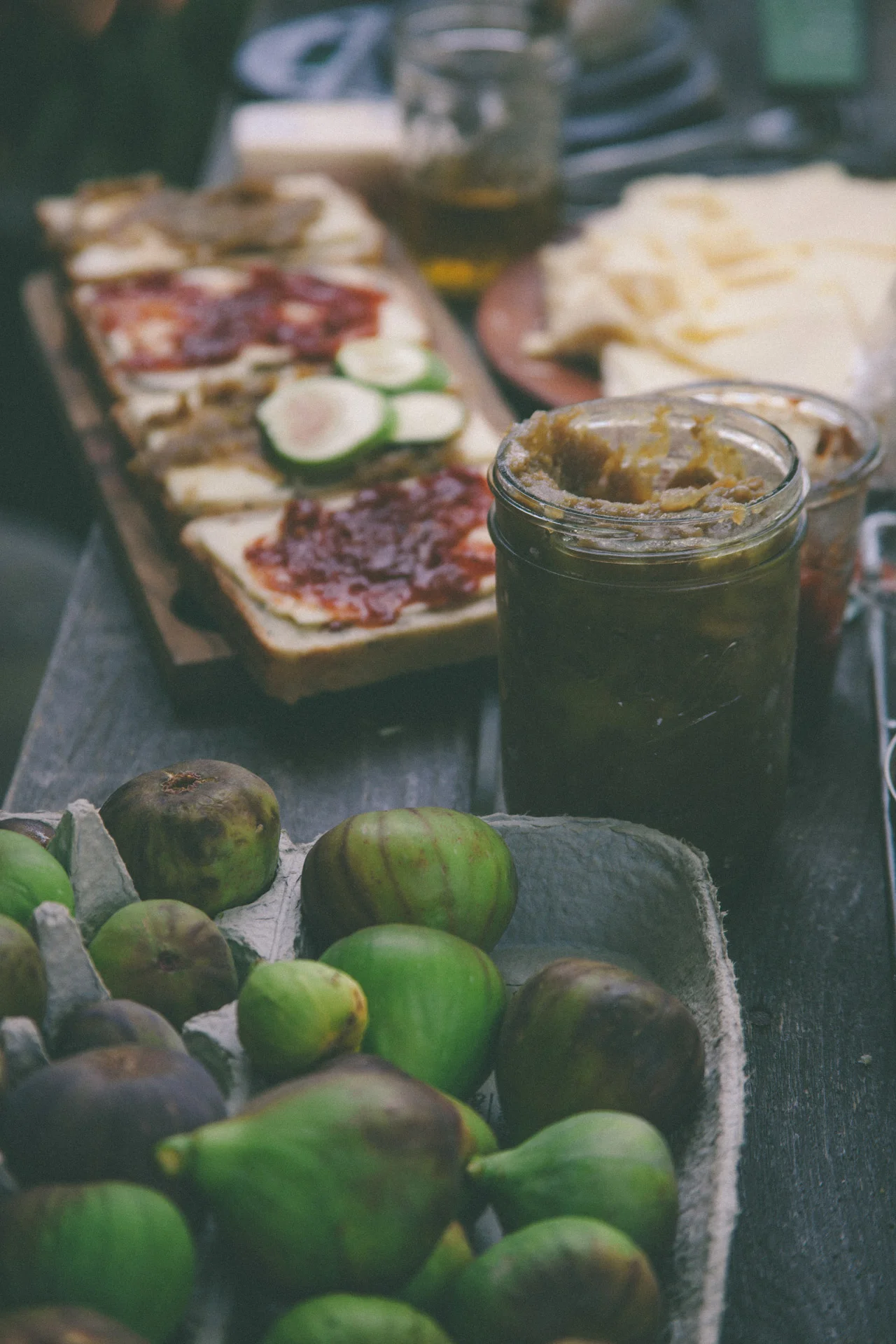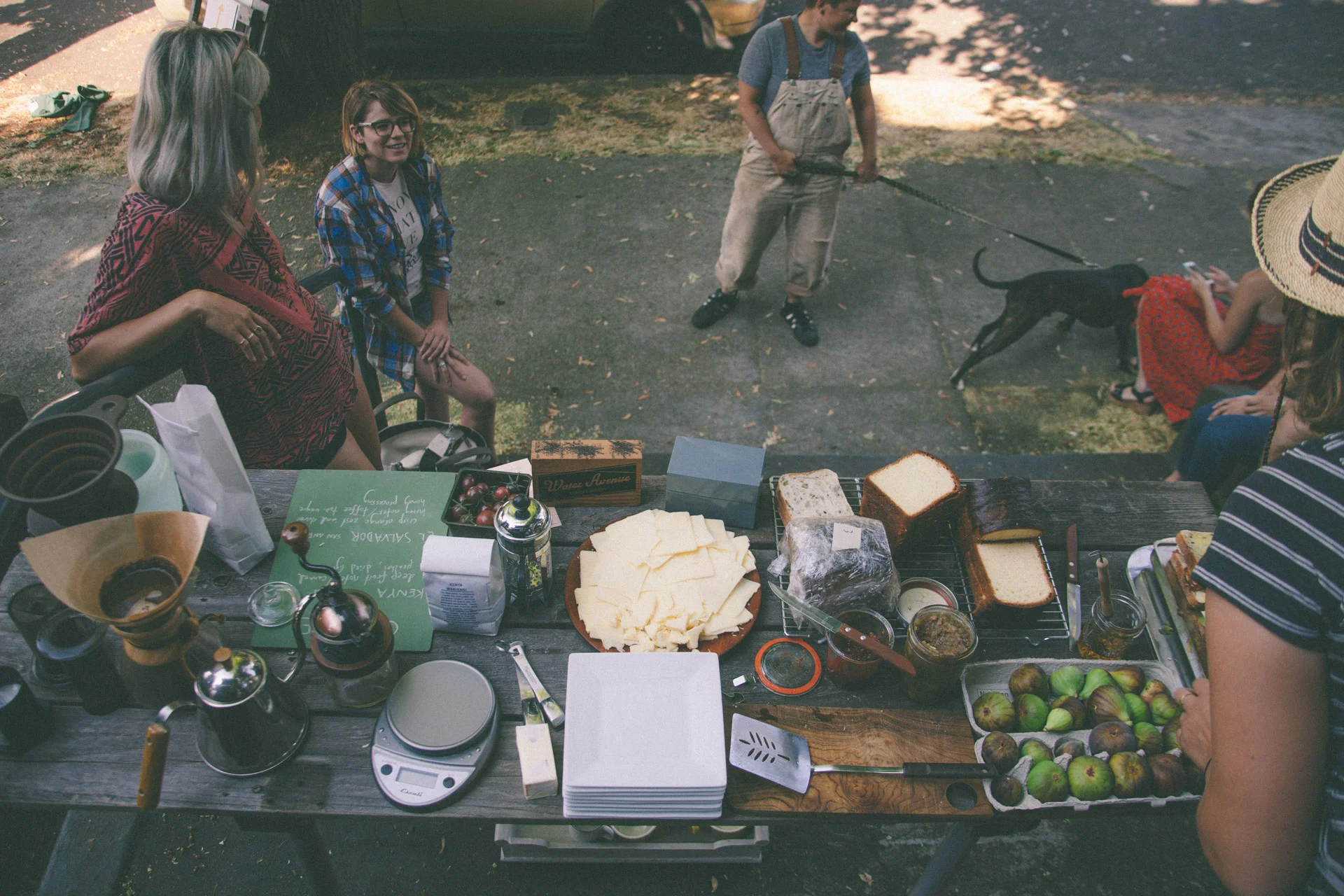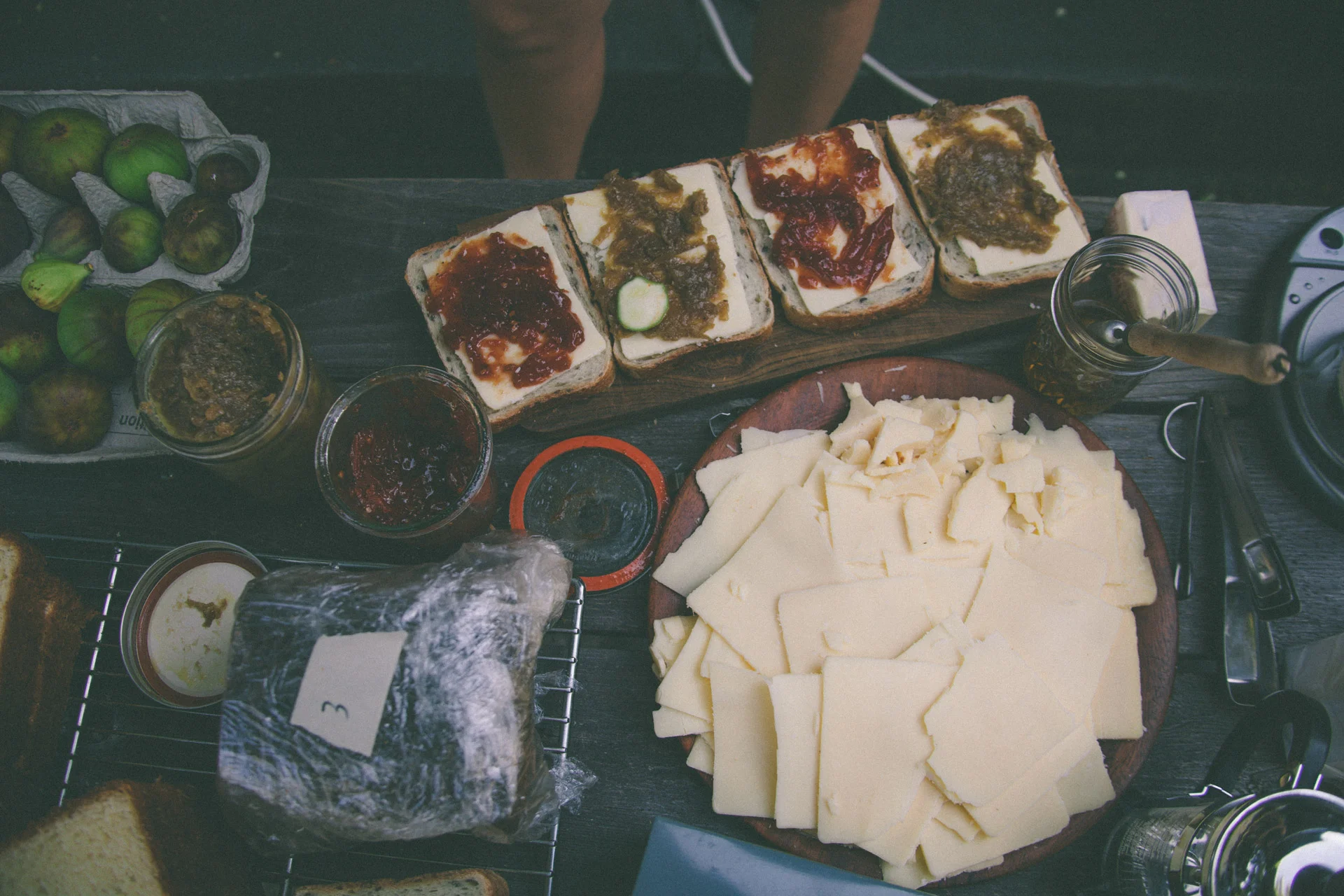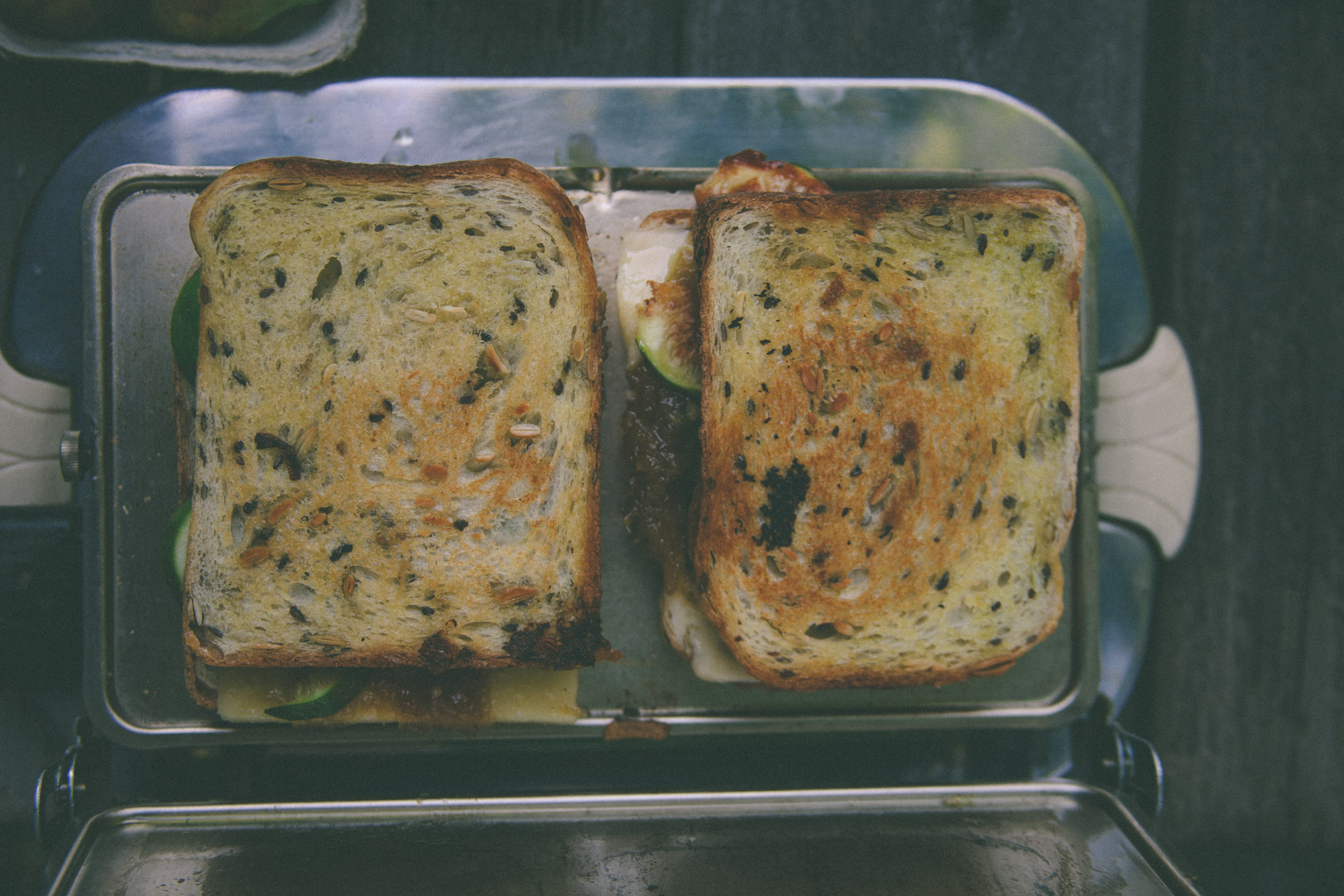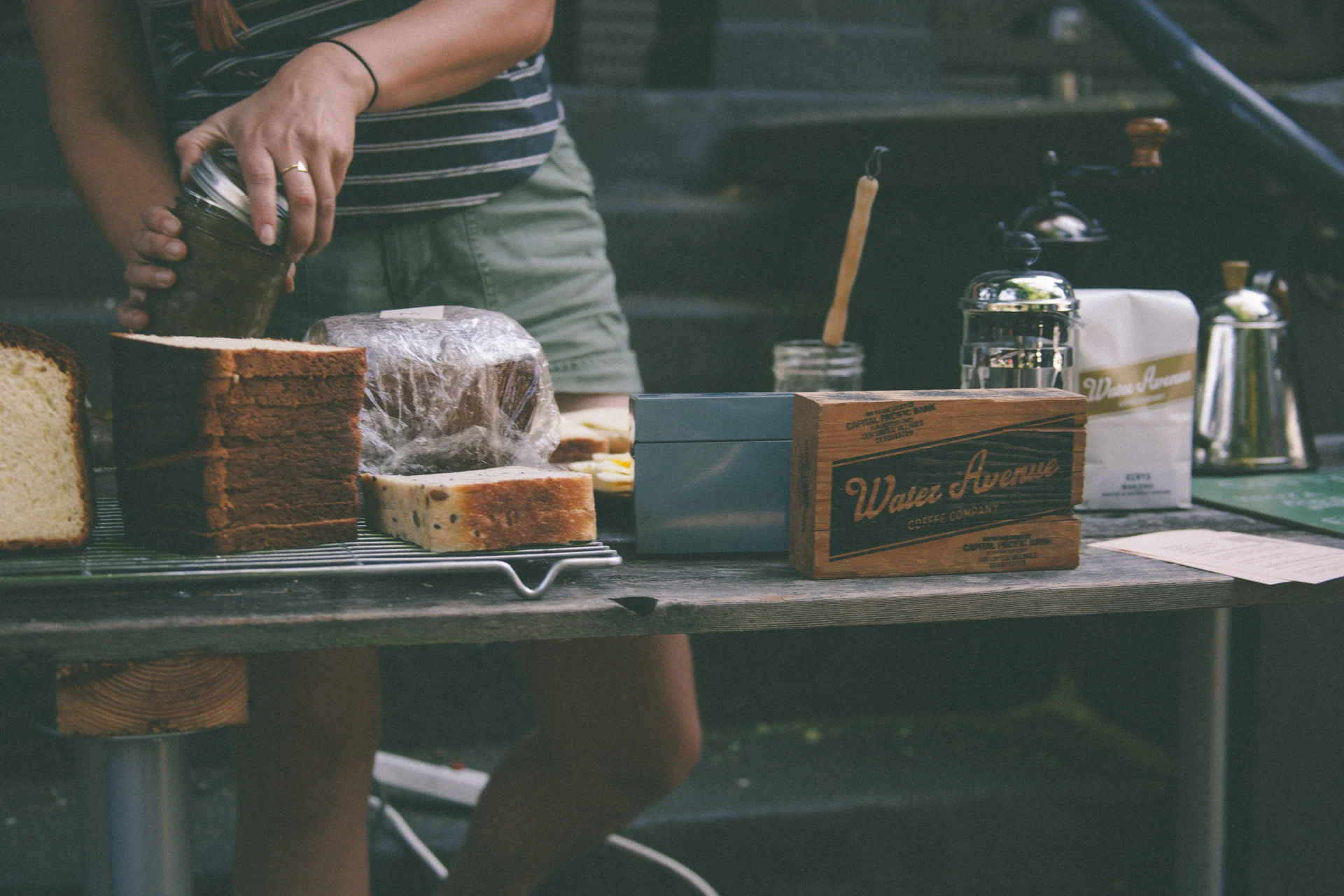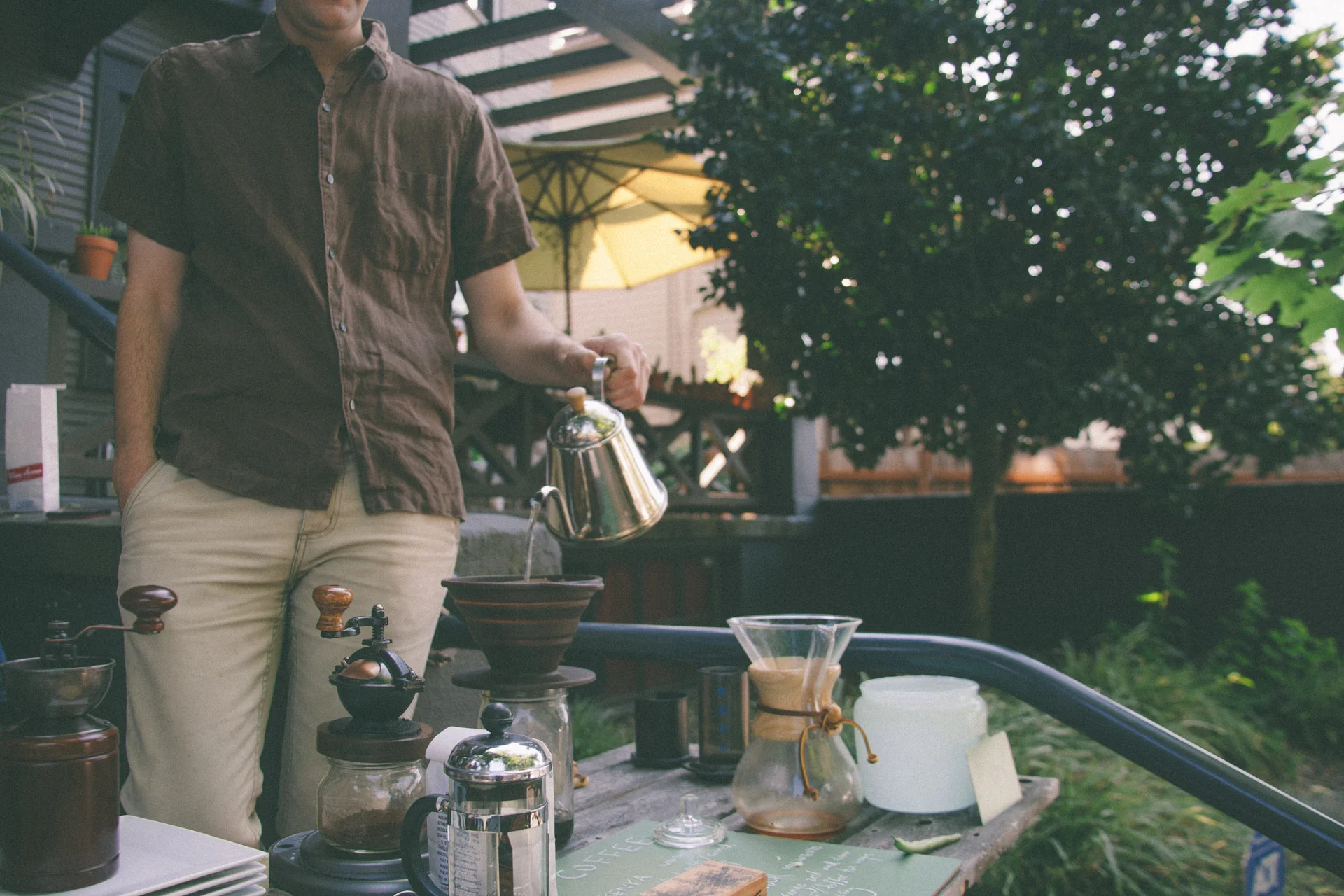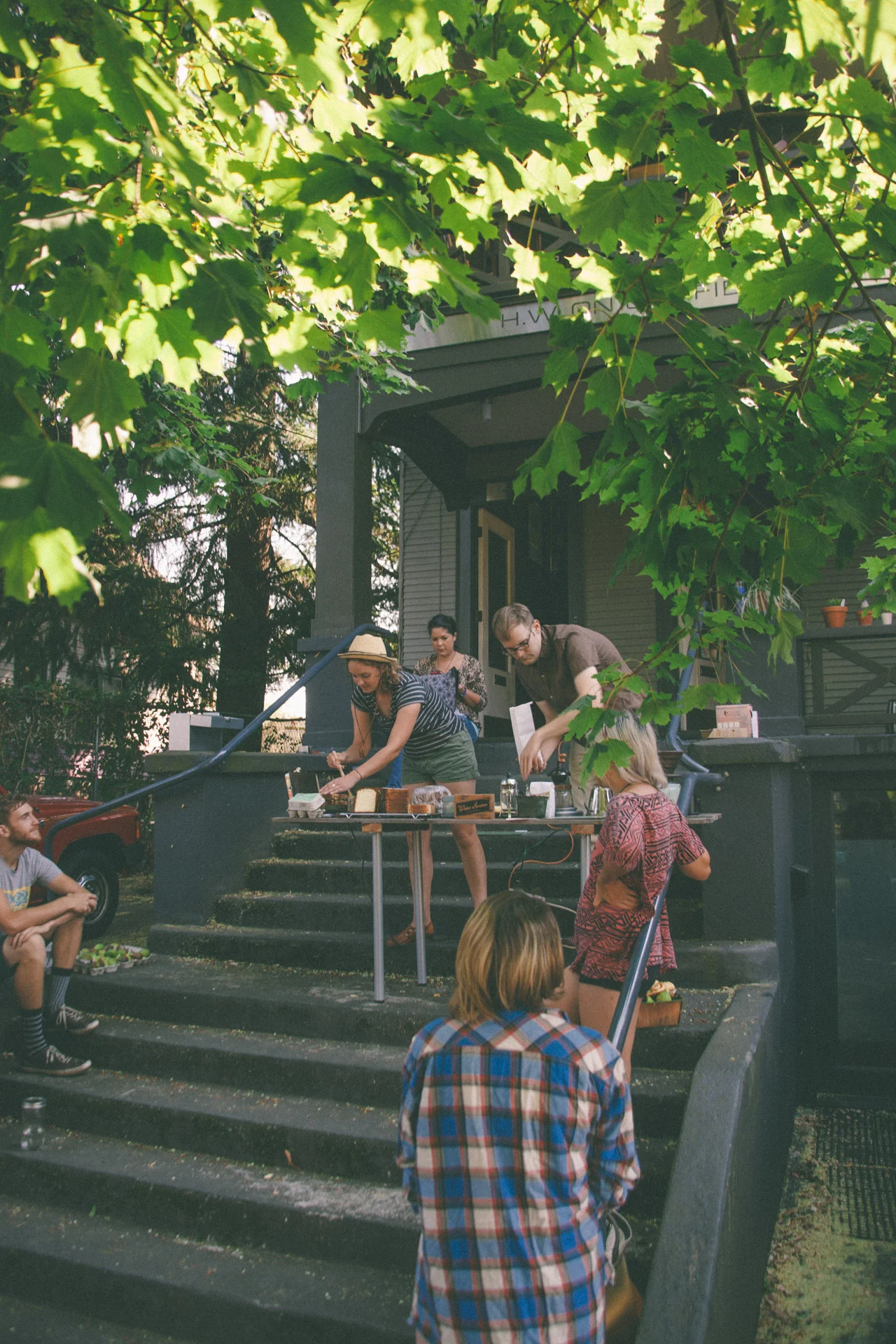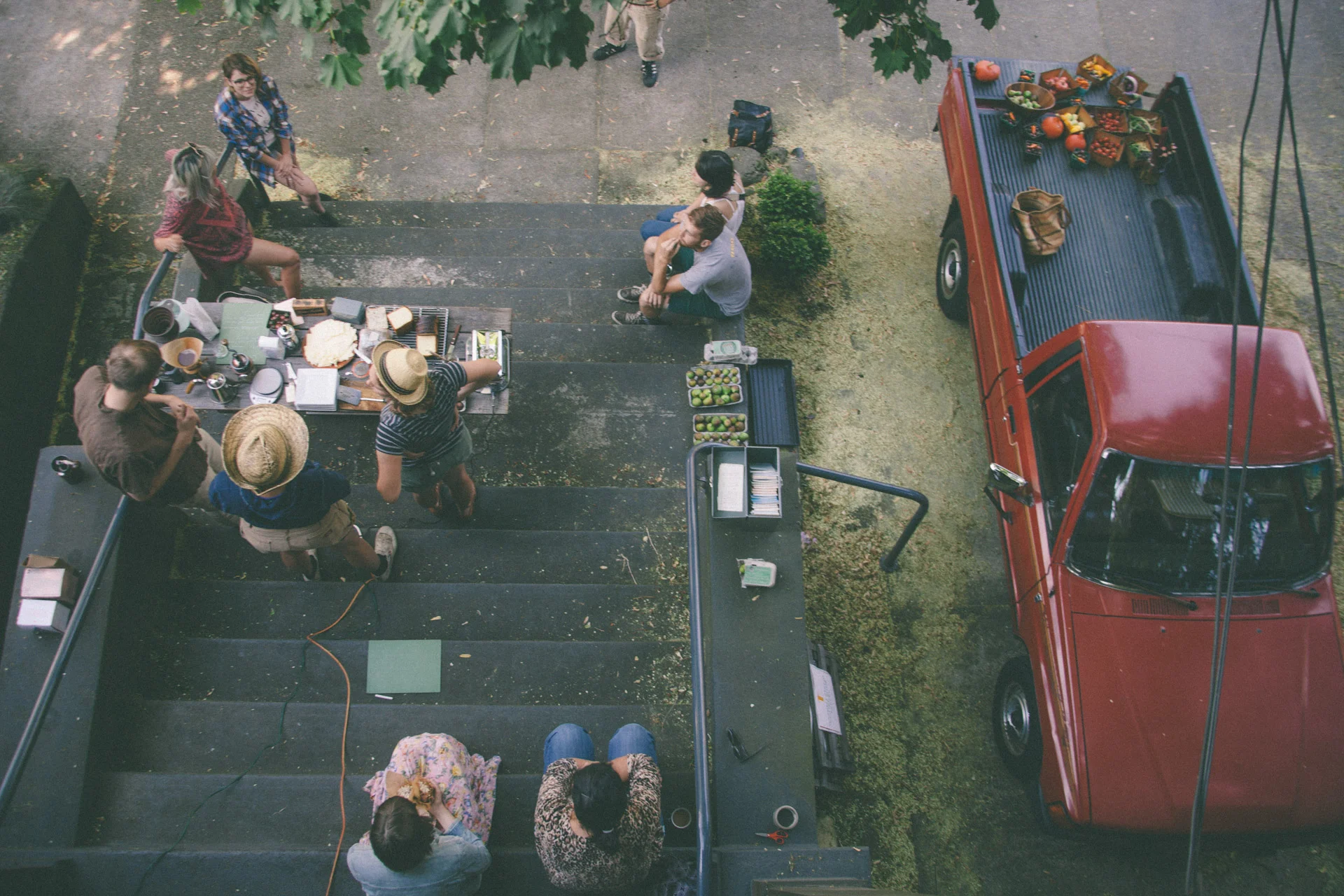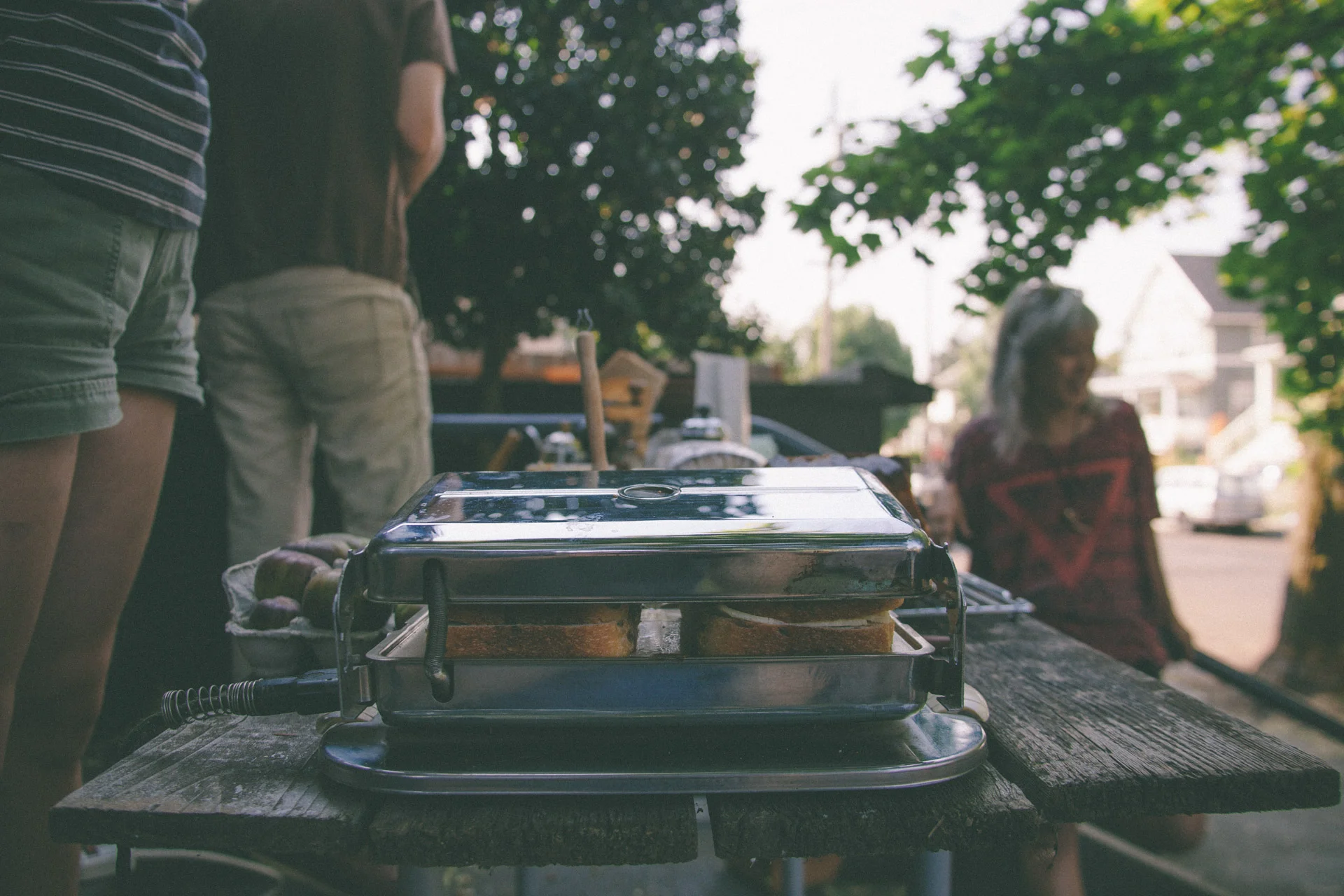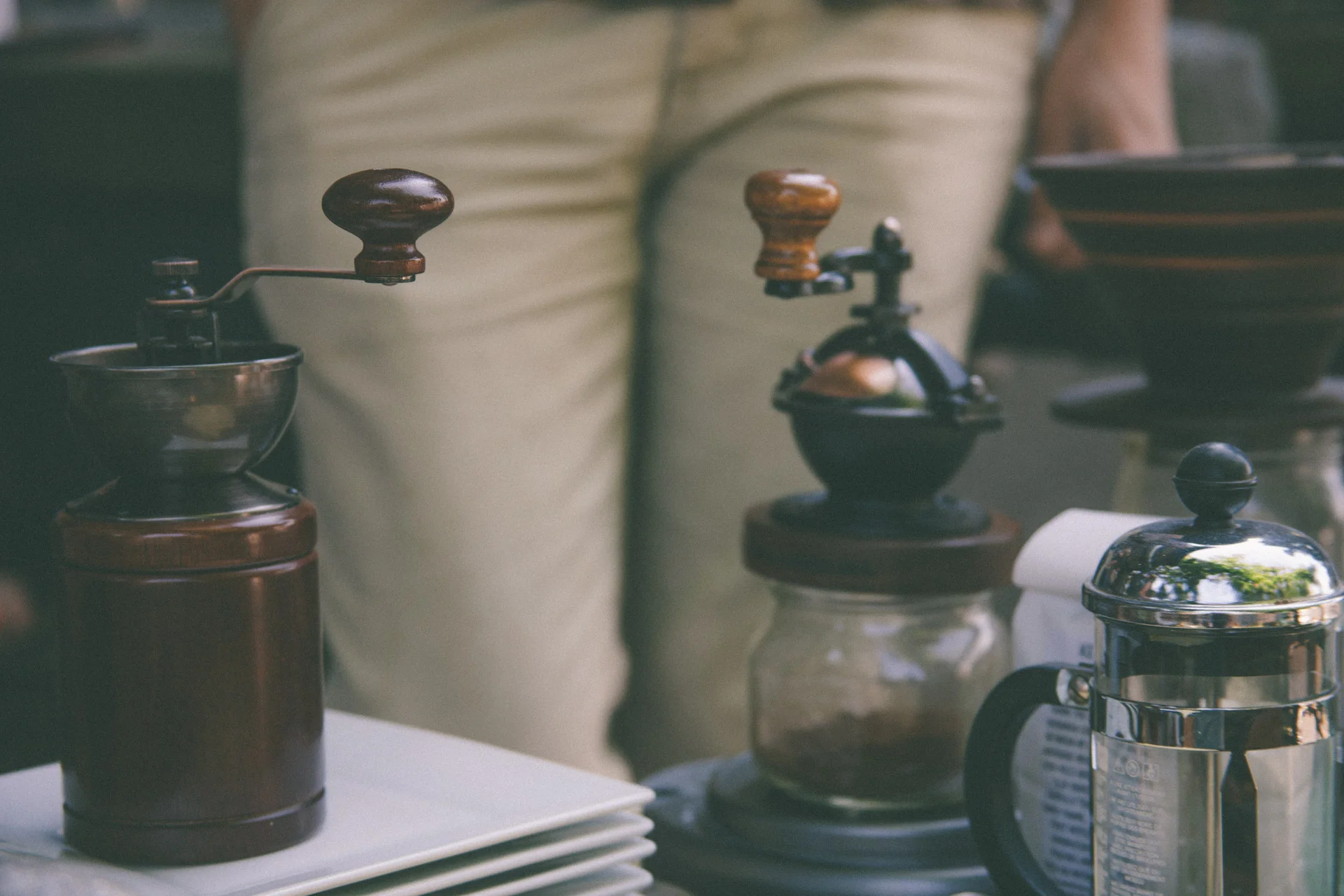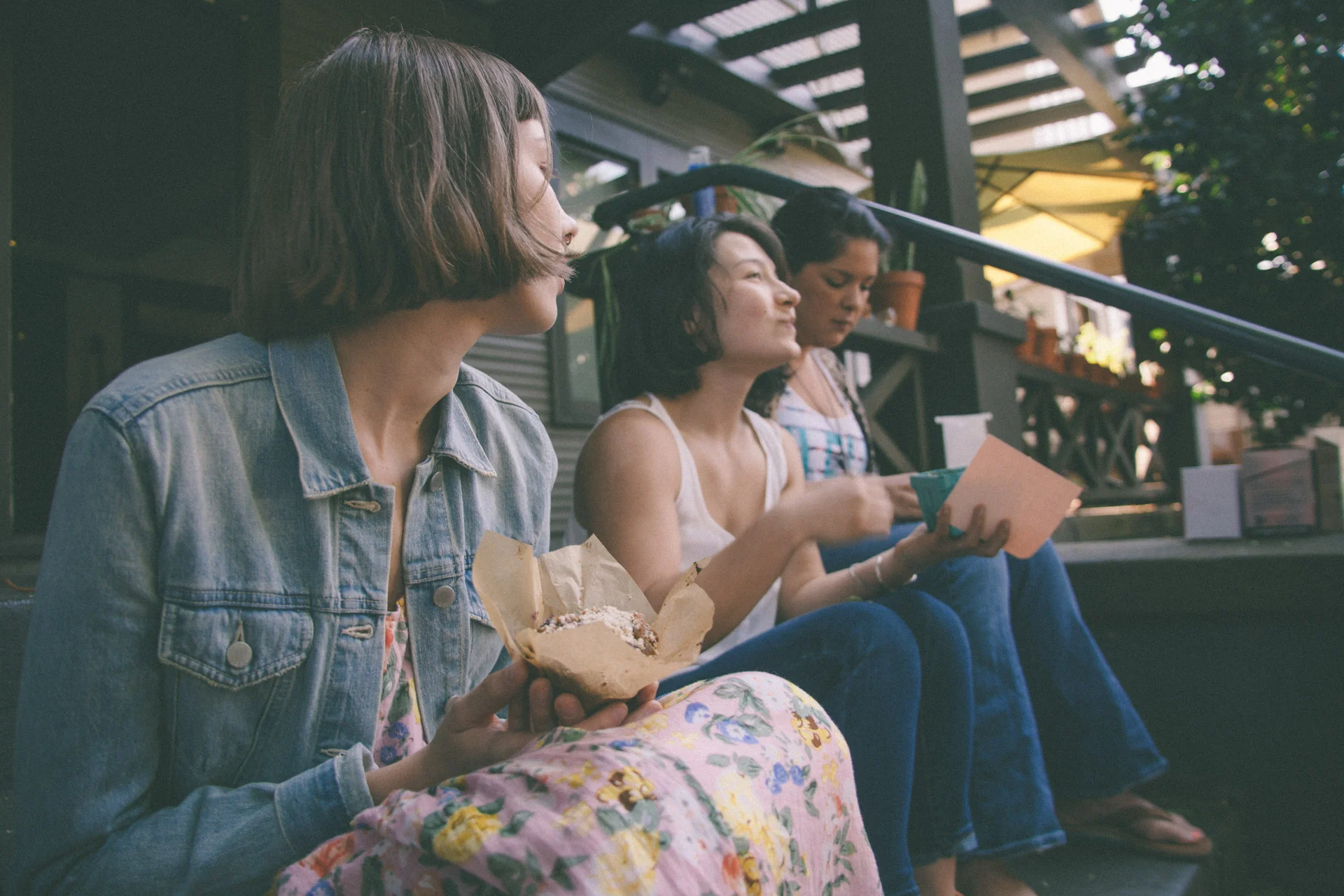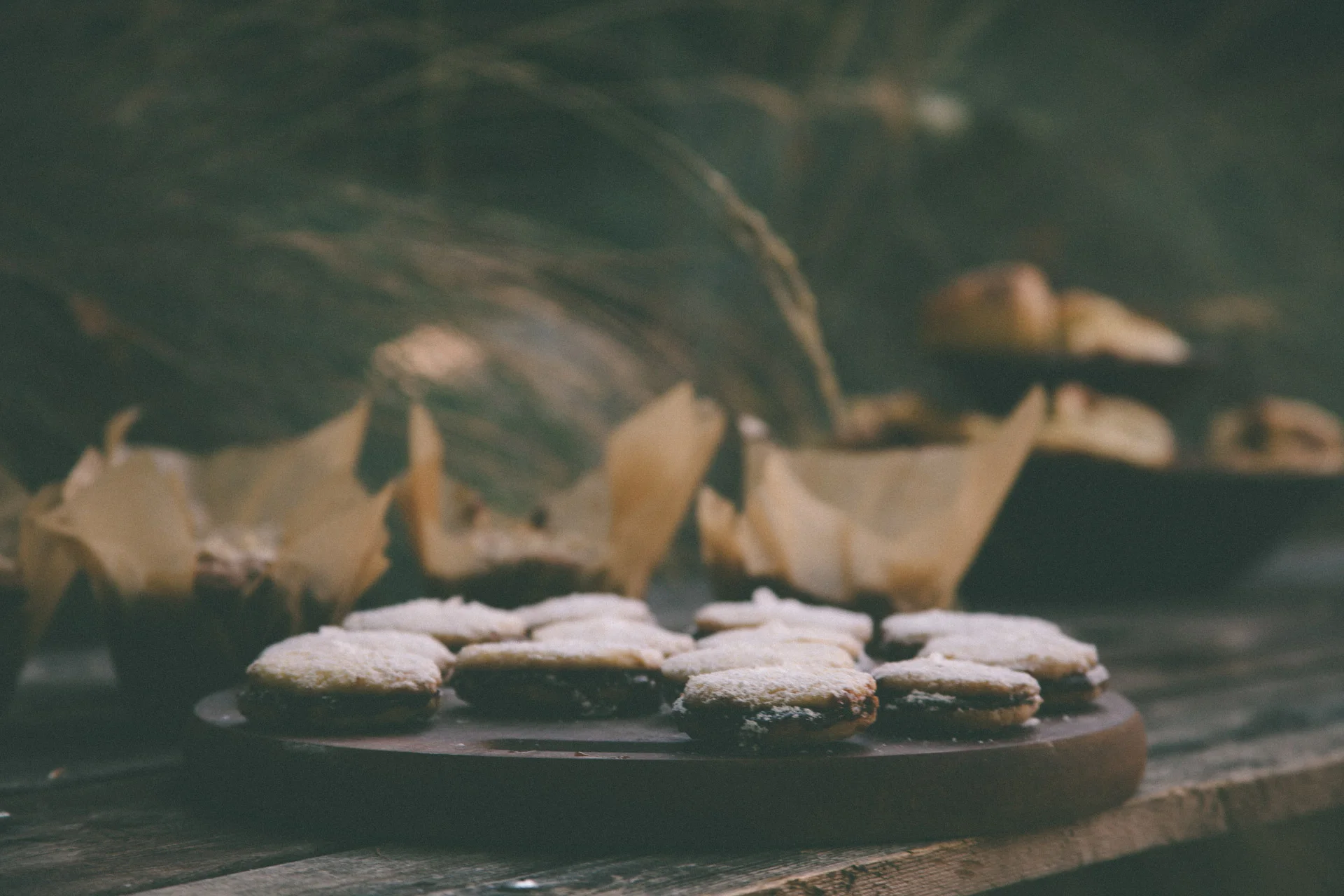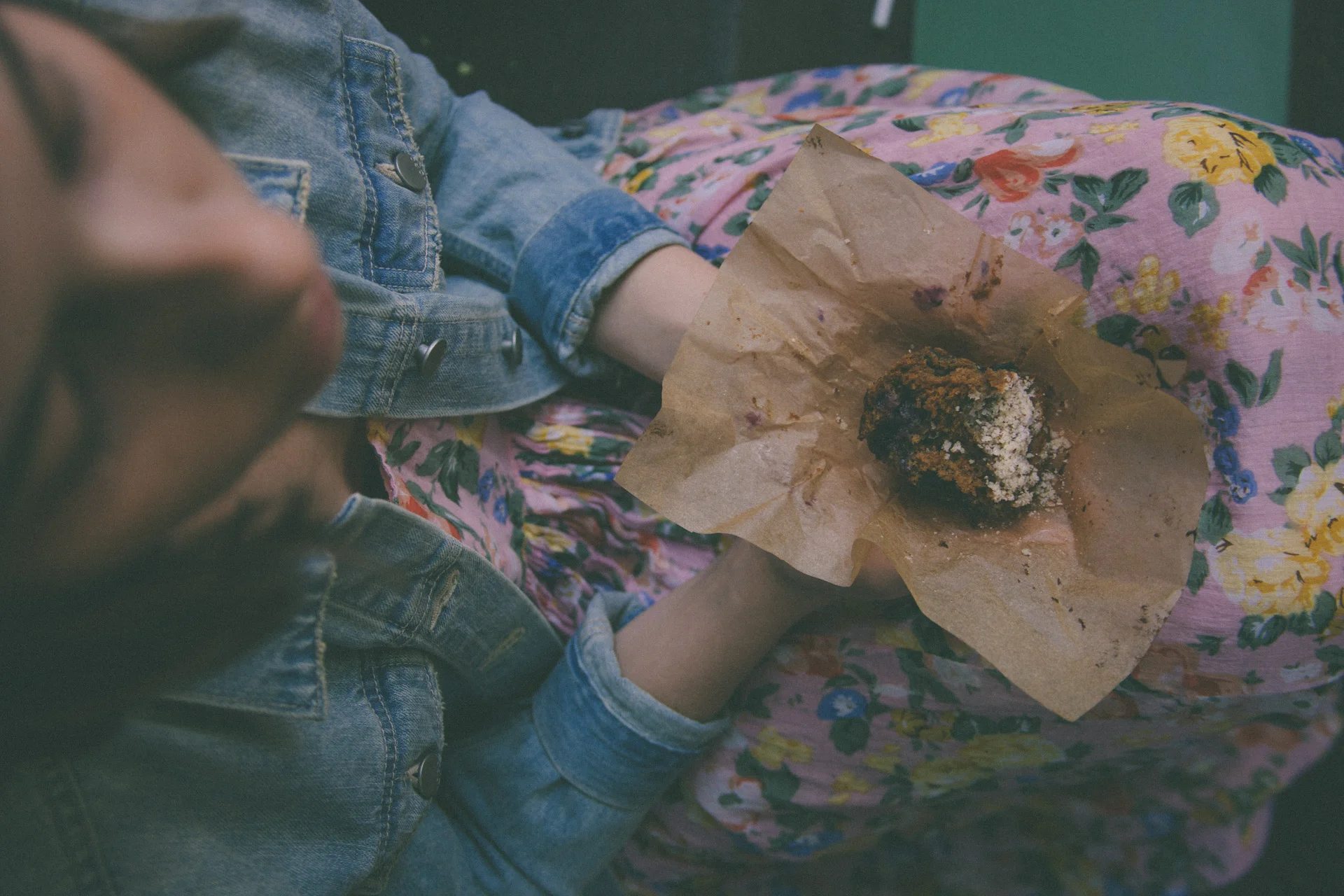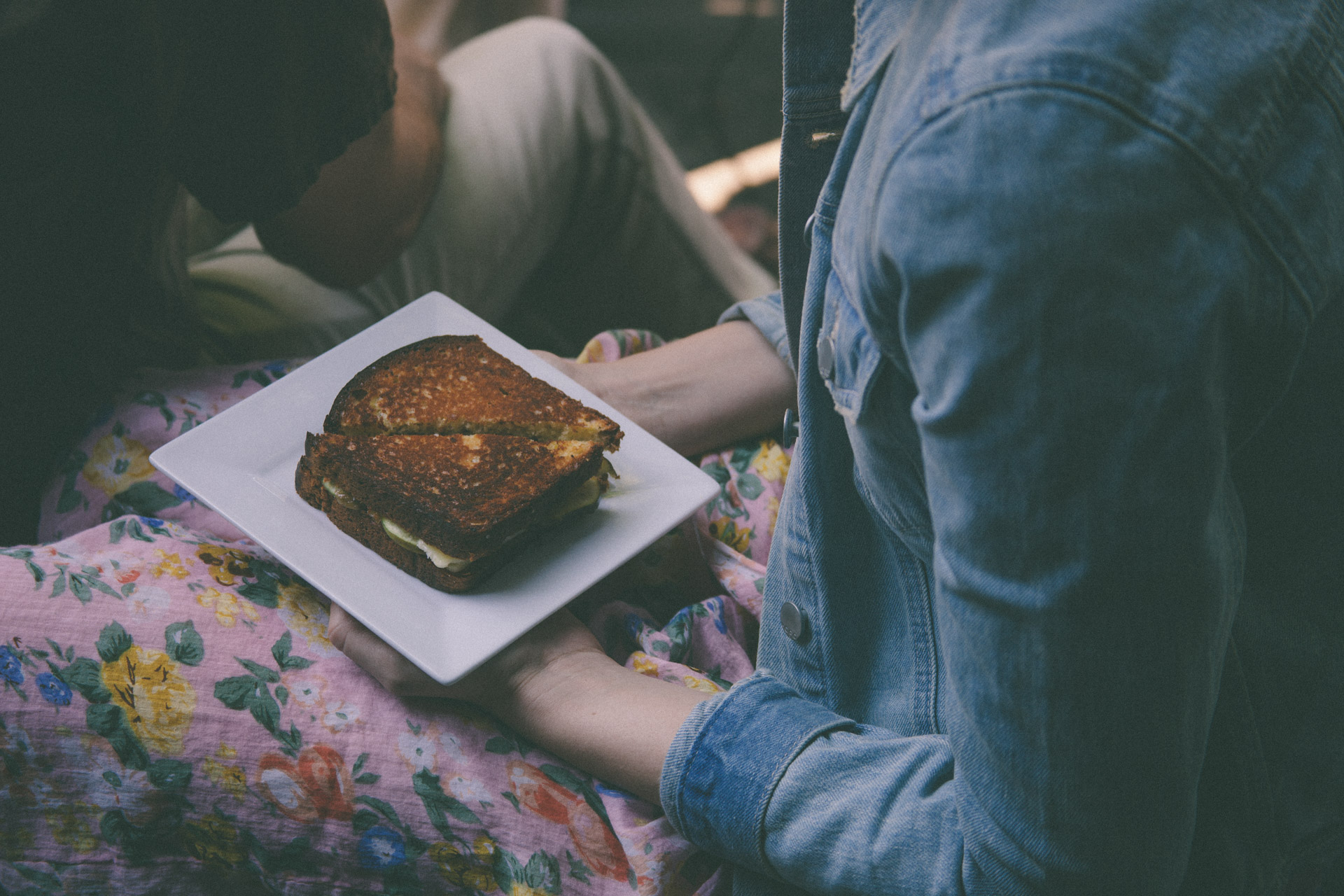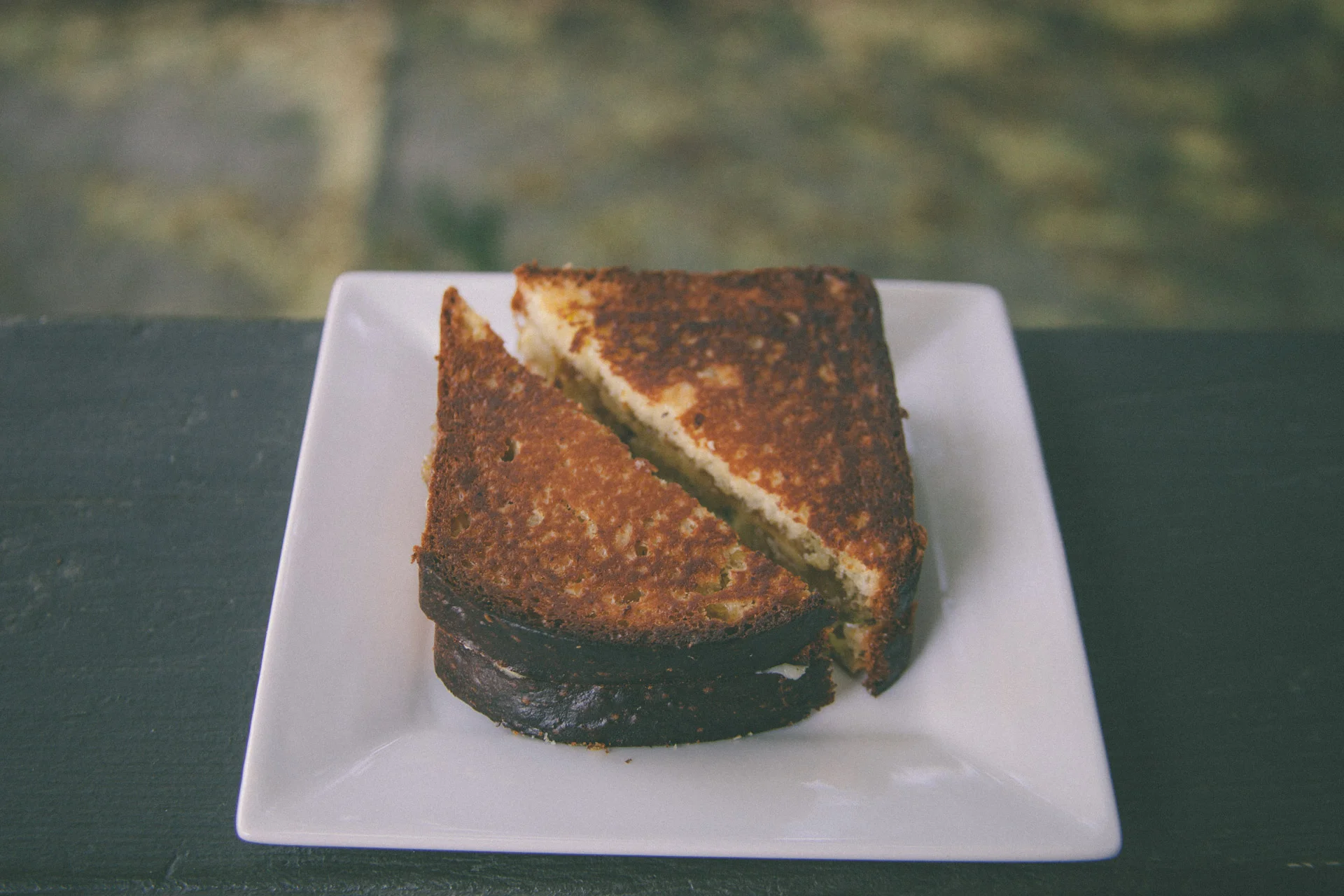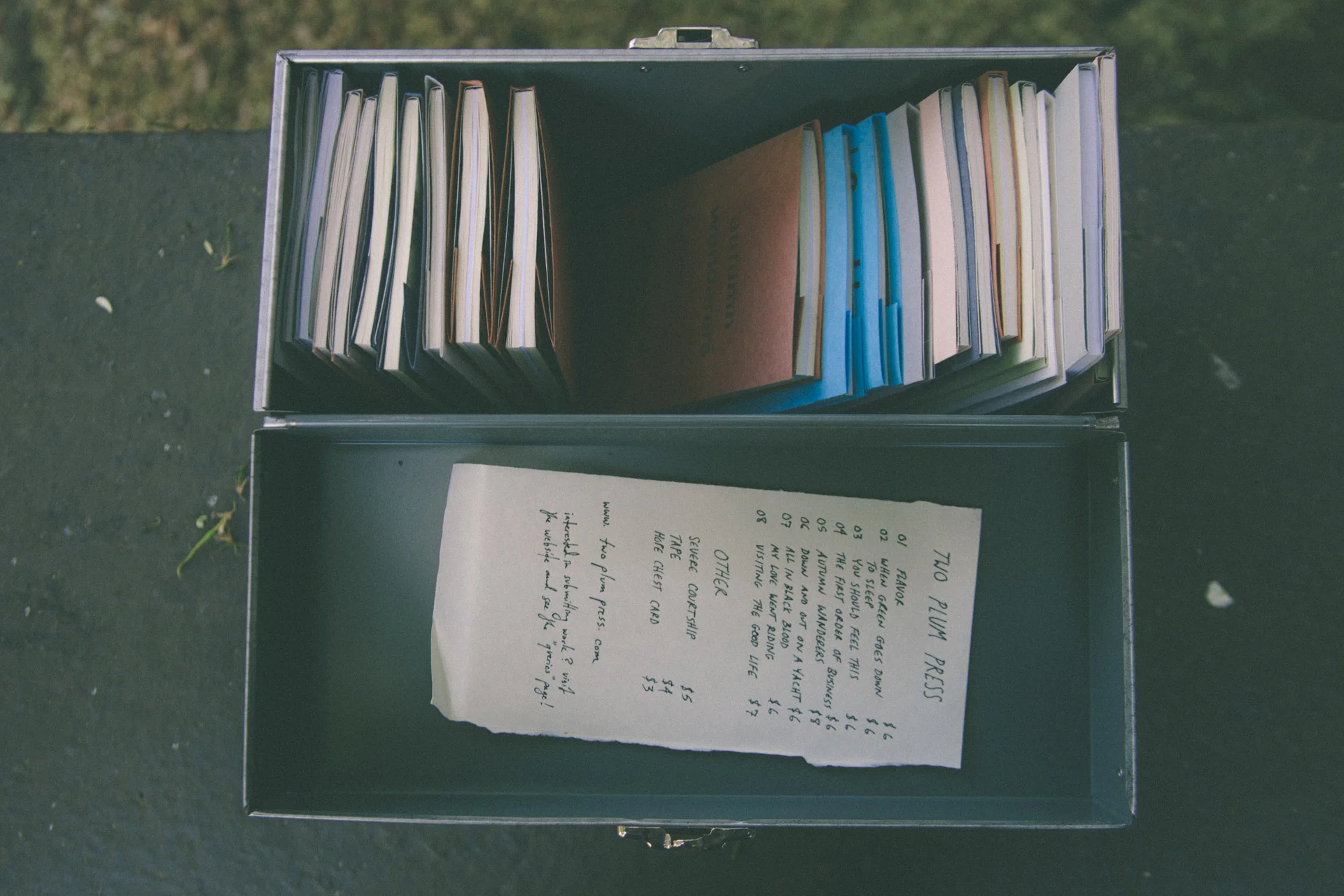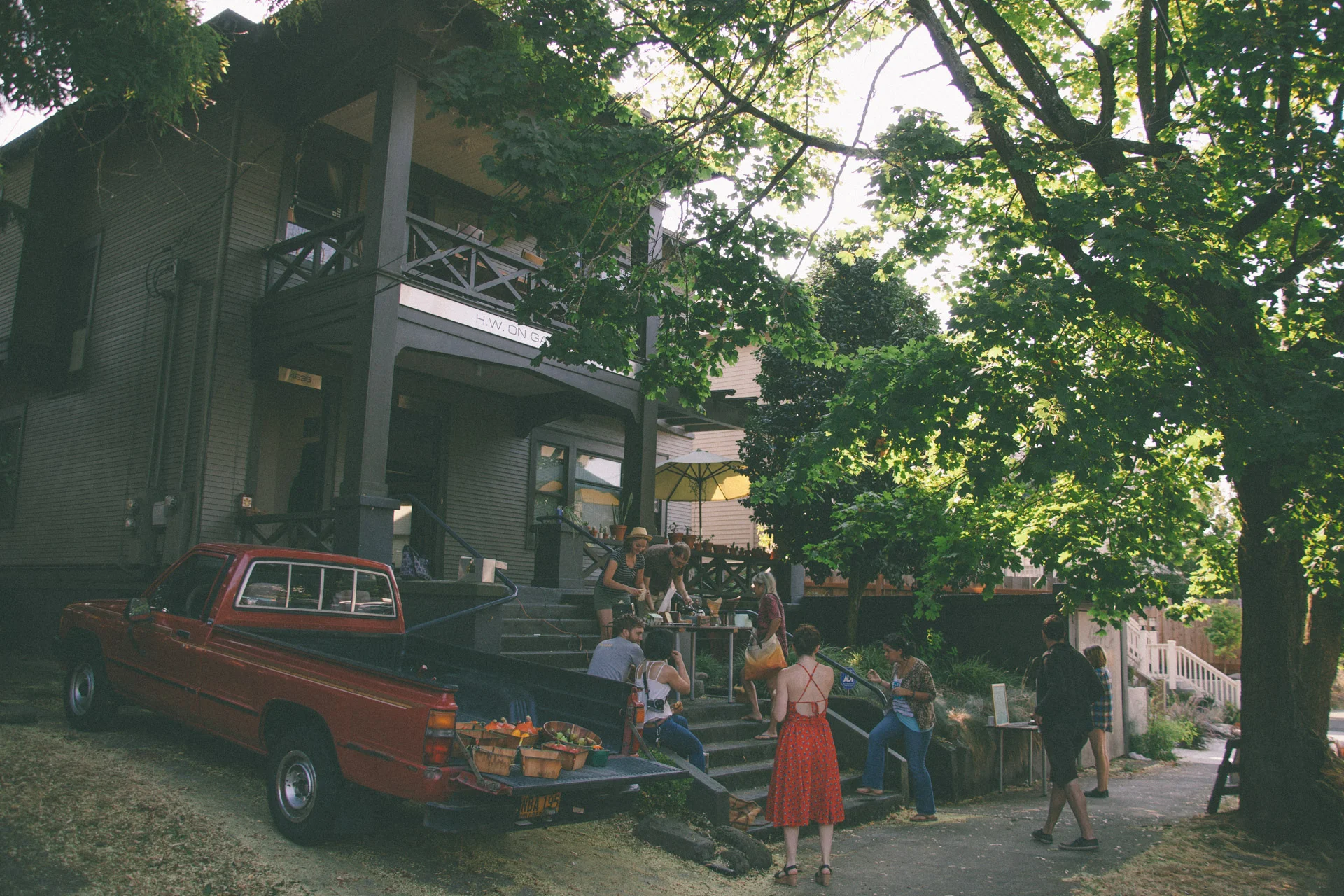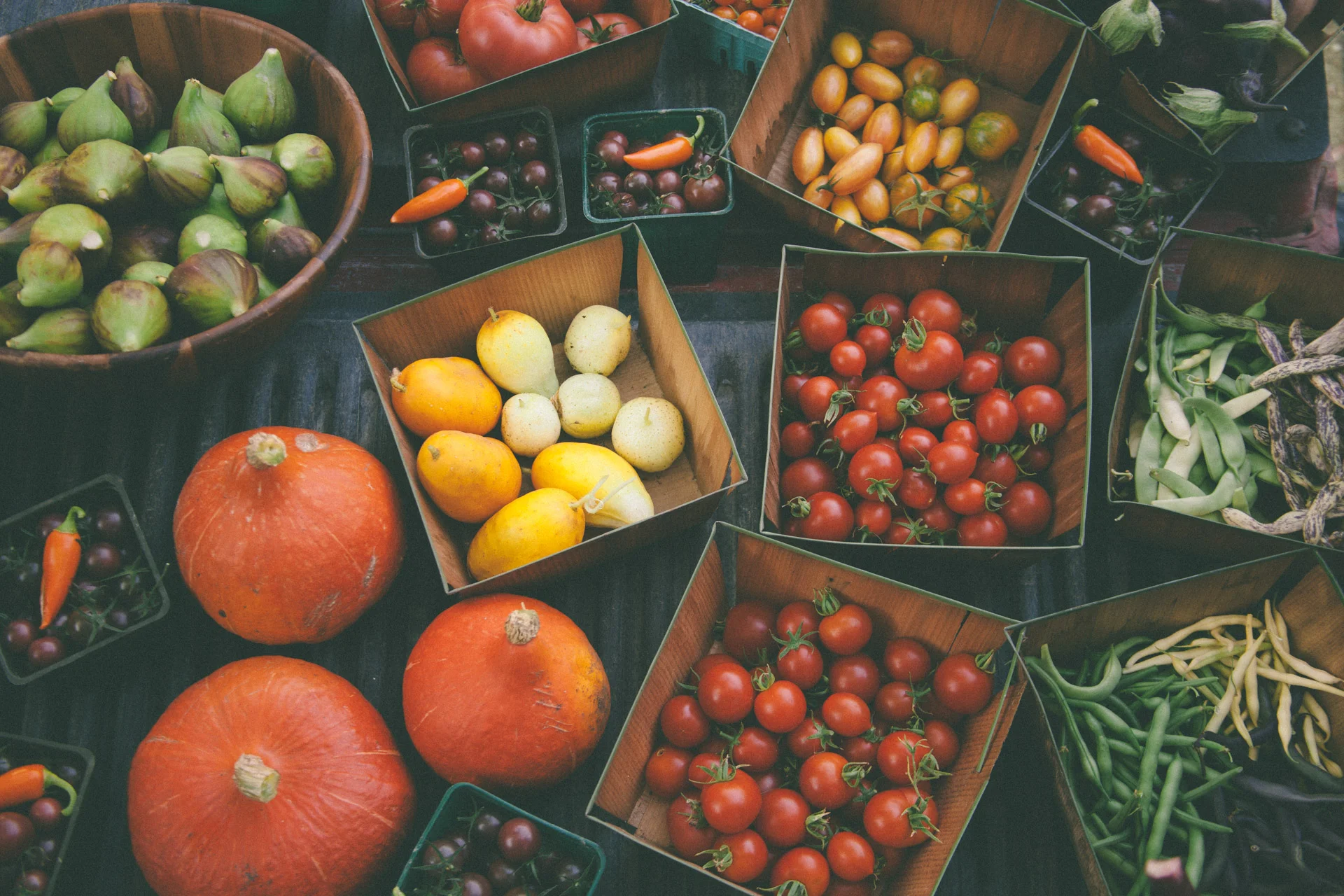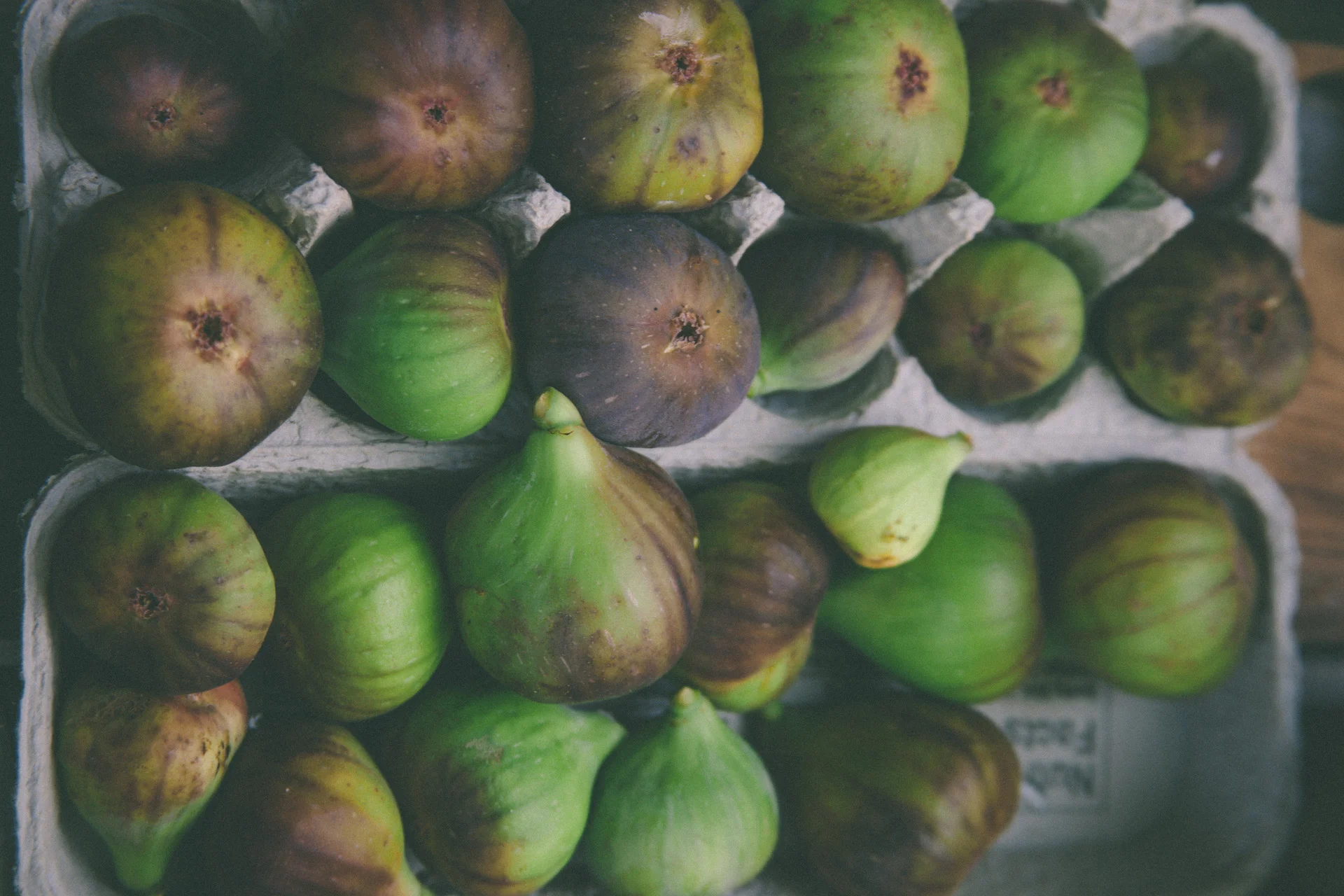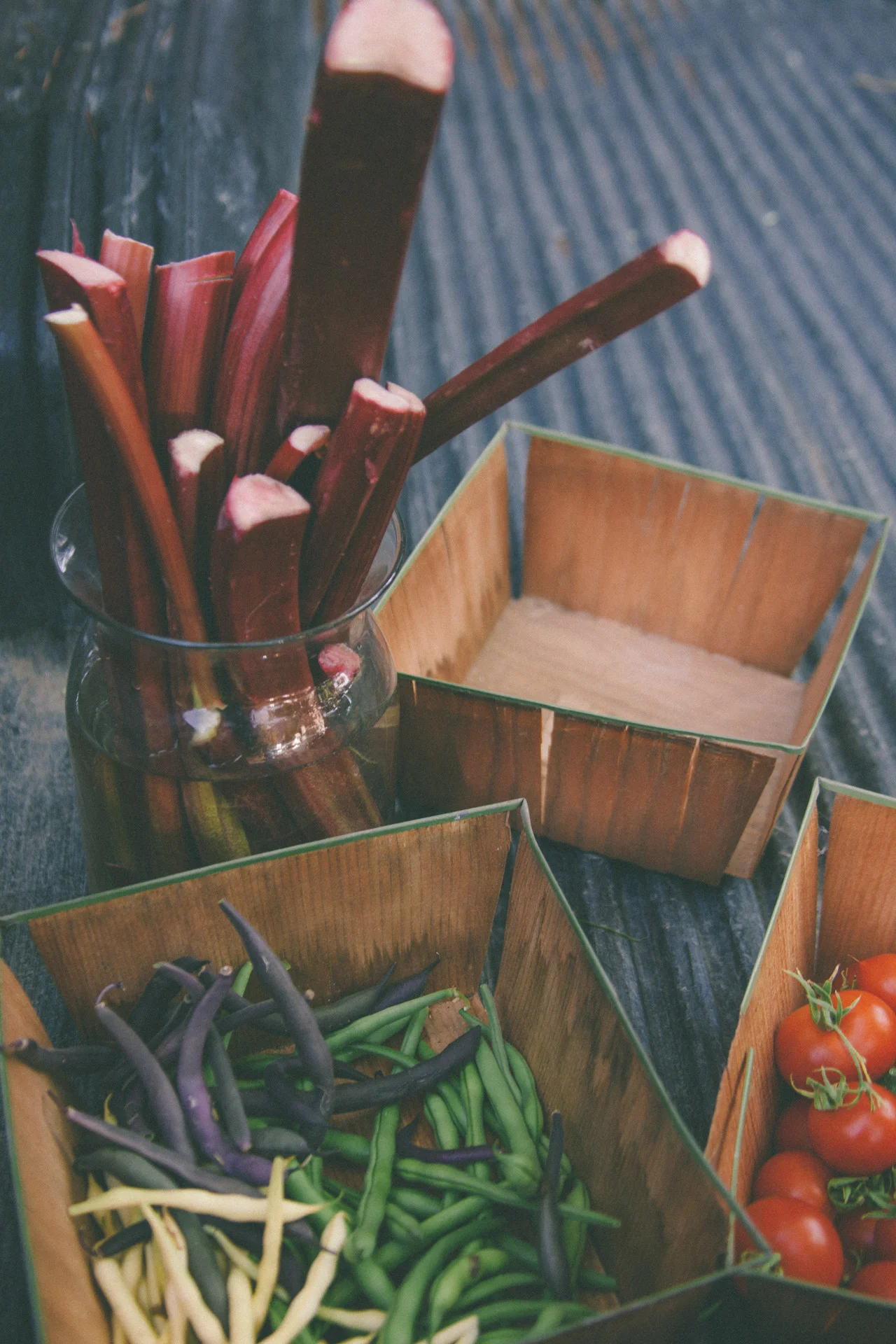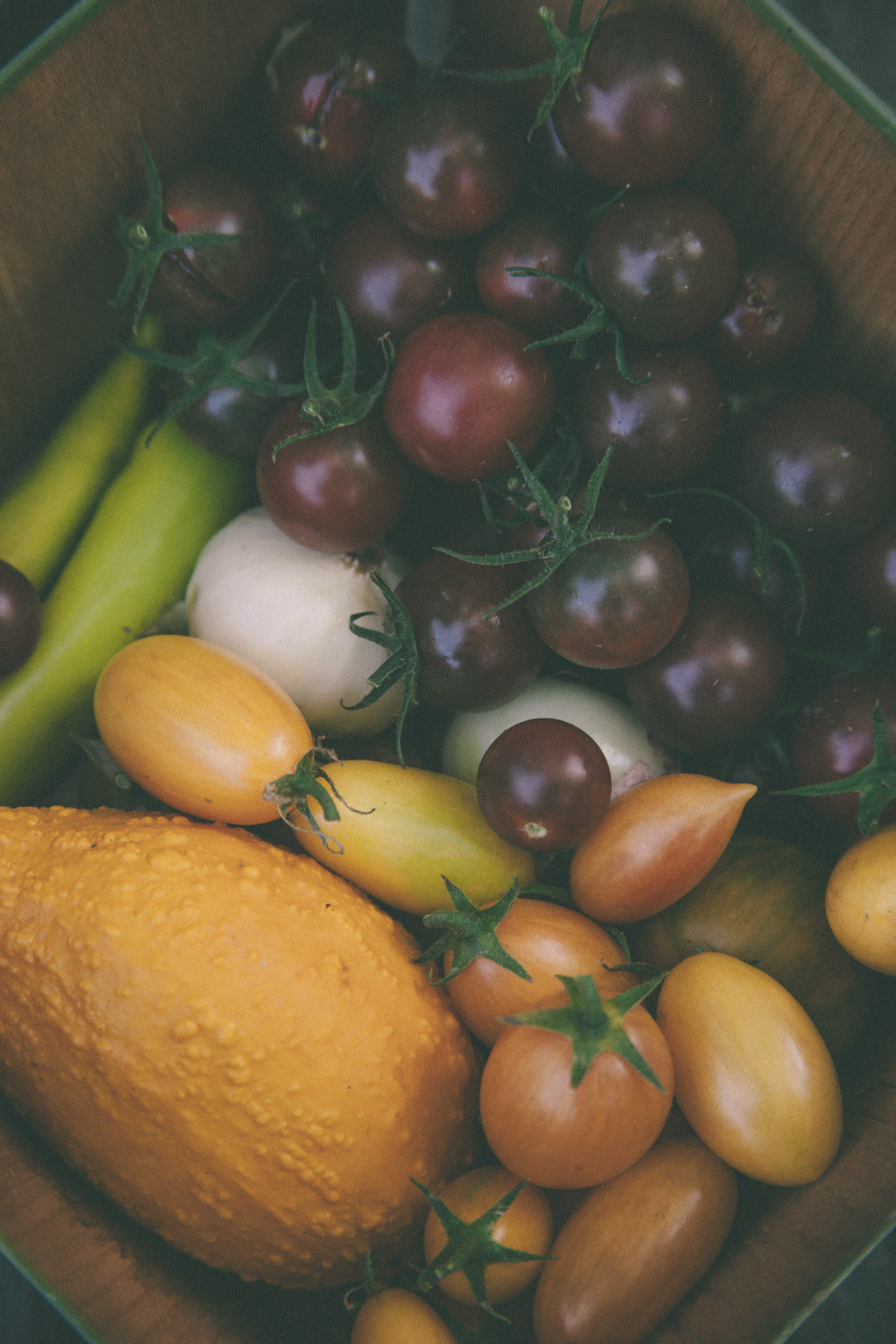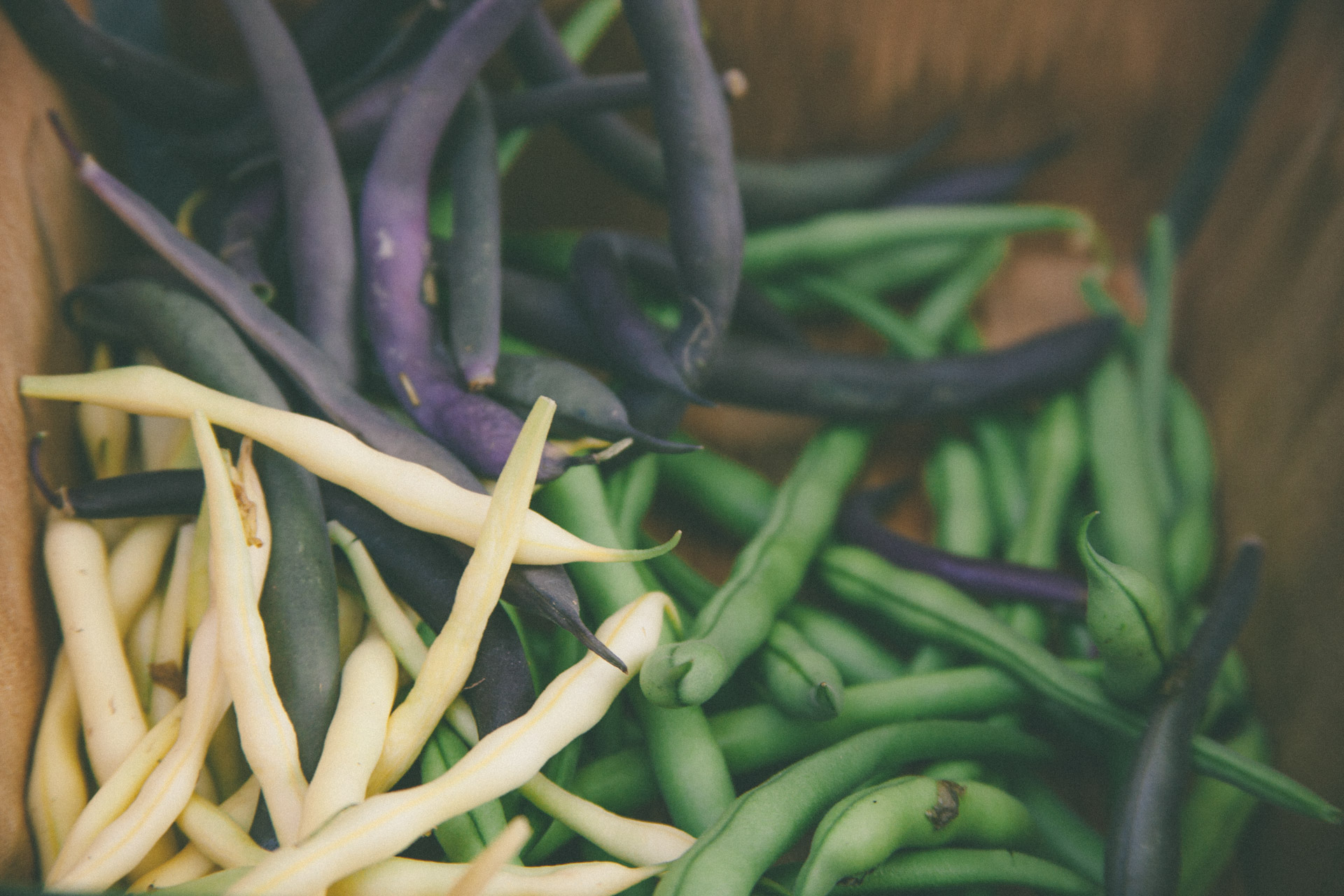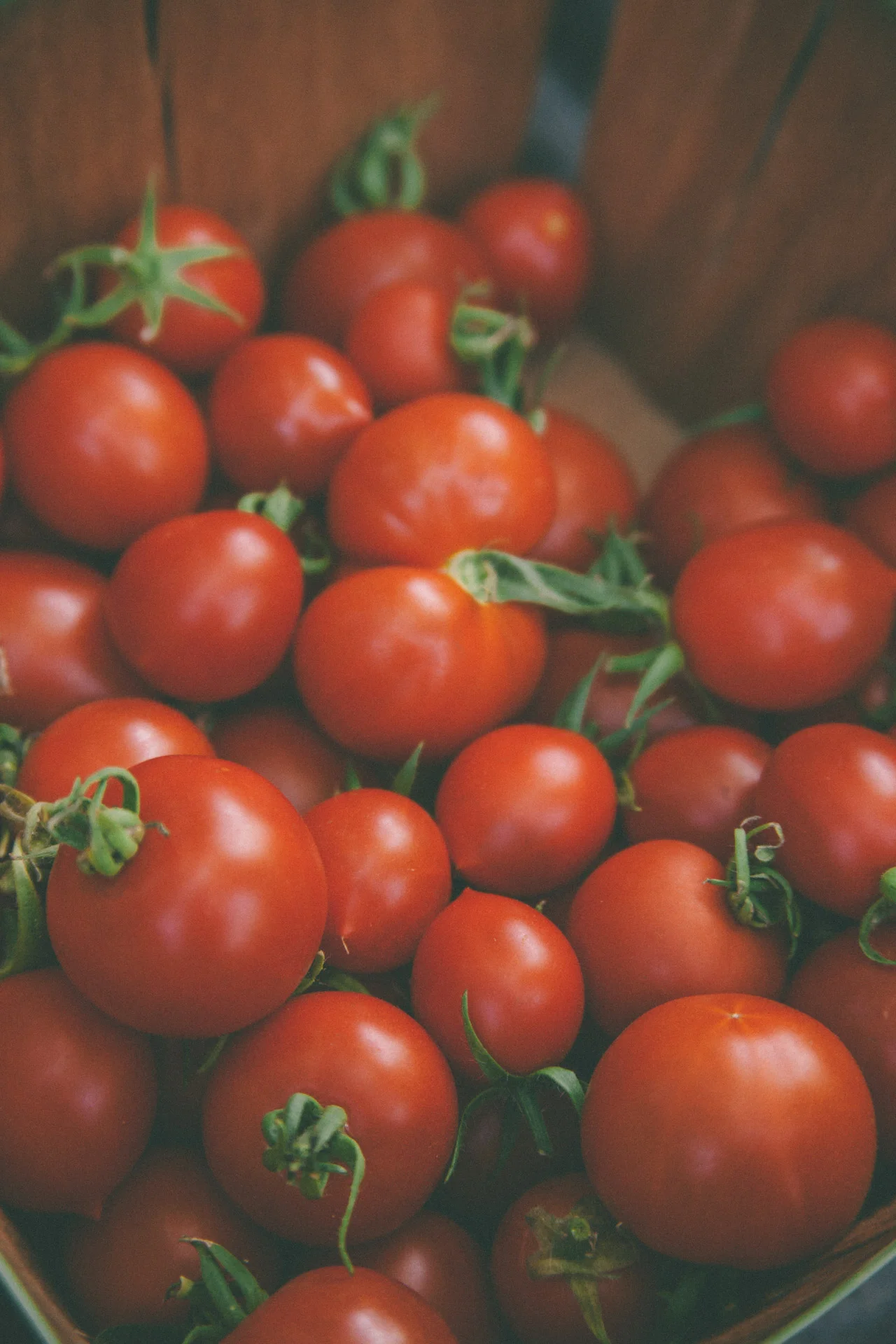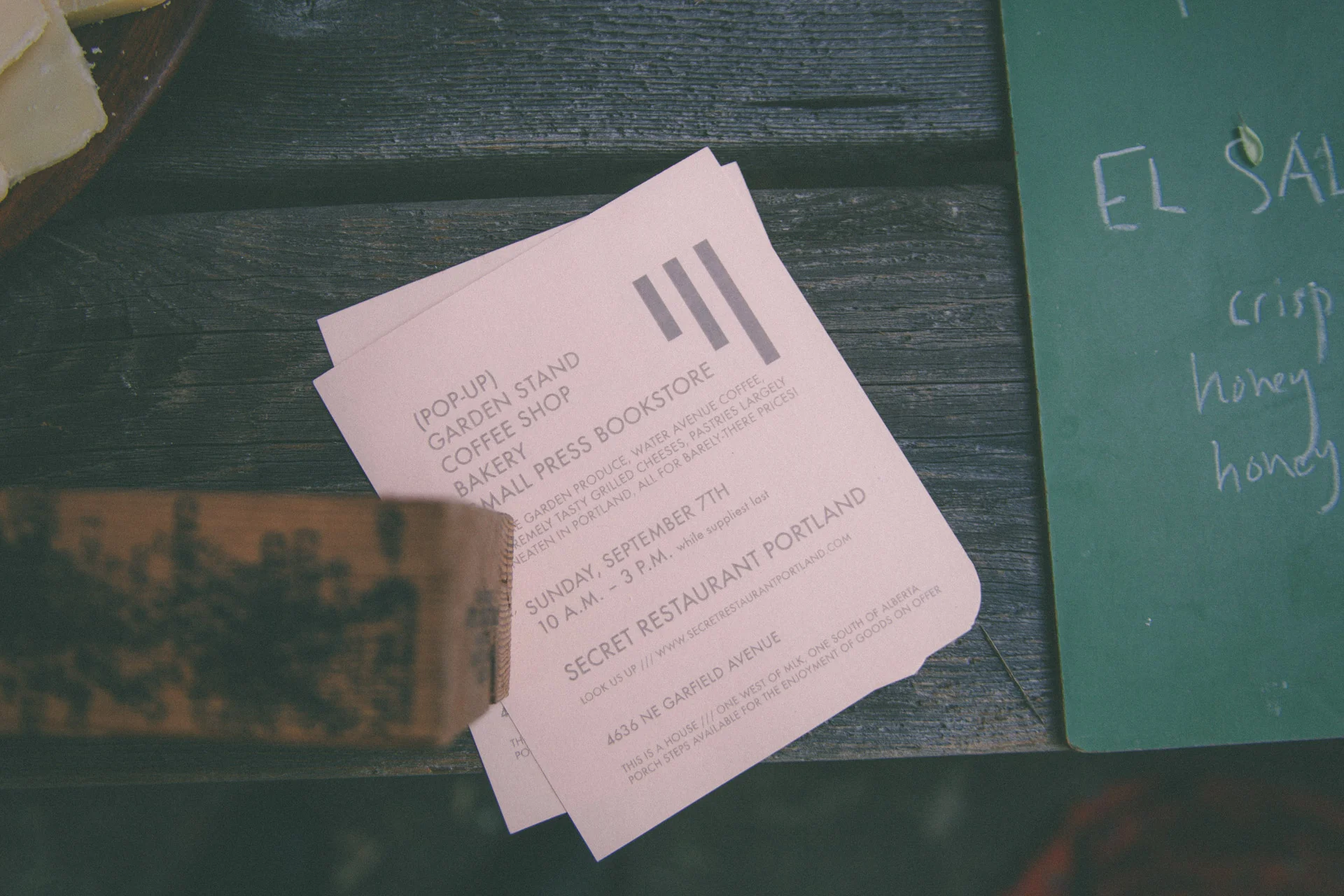GARDEN STAND
(start of september. number 53.)
An event that began as a fantasy of mine in 2012, when I worked on the first Secret Garden. A one day farm stand to sell the garden's extra produce. It made sense financially (an opportunity to recoup costs of seeds and soil amendments) and sounded fun. Knowing I couldn't exactly draw the crowds in with my backyard vegetables, the idea of combining it with some kind of Secret Restaurant thing slowly crept into the vision. After the 2012 season, around Christmas I think, I bought these beautiful ancient cedar produce baskets for $1 a pop at a vintage store in Eugene. A silly purchase, really, but their size and quantity suited what I could reasonably grow for my fantasy event.
2013 was enough of a journey getting the new garden across the street going, and adapting the back yard garden, that we only had time for one garden potluck, and weren't quite there with this event idea. We'd used a cute truck cooperatively owned by Sofie's mom and her neighbors to move compost and bark mulch, and I now knew that its presence would be essential when this thing finally came together.
I grew the garden almost all by myself in 2014. Even with the now often hinted at cookbook project deep underway and a Secret Restaurant sourced mostly from there, I certainly couldn't eat everything it produced. In the months after the ambitious 50th dinner, I knew I wanted to keep things casual for at least three events; an extended come down, of sorts. The first weekend of September was the perfect contender. Temperatures still in the stratosphere, but a garden full of half dead plants and a glut of all the things I (and everyone else) had been waiting for.
All the pieces started fitting together: garden truck-stand, coffee bar, bakery, and our own grilled cheese grill.
The event was comically "Portland-y." People rode up on their bikes, wearing cute backpacks. Old country records drifted down from the open window of my bedroom. We just happened to have an art deco sandwich press, and we were doing pour over coffees using a wooden-handled Japanese pour-over pot. Urban garden produce was sold out of those delicate cedar baskets on the back of a 1980s red Toyota truck. Pastries were presented on rustic wooden tables and cutting boards.
I wear this "Portland-y"ness on my sleeve, loud and proud. This was my fantasy, after all. I must state that none of this work is phoned-in or duplicated from blogs or with an end goal of hype and expansion. I do this work to simply share the joy of growing, cooking, and eating good food with friends and whoever-else. We aren't pretending anything is perfect. We fumbled through our first several orders. We filled up our hot-water heater from the hose, not from a filtered water tap. We had no investors, no stylist. Yet the food and coffee were good, people came out, people loved it, and we were sold out in 2 hours.
ON THE BACK OF THE TRUCK:
Eggplant (four varieties)
Tomatoes (six varieties)
Bush beans (five varieties)
Hungarian spicy peppers
Pacific pearl onions
Yellow crookneck squash
Oregon sweetmeat winter squash
Red Kuri winter squash
Rhubarb (still good, even with the berries come/gone)
Lemon & "boothby's blonde" cucumbers
Black cherry tomatoes + spicy peppers (grown by our friend Piece Kennedy)
Brown turkey figs (grown by our crew Kate and Peter Schweitzer)
Bonus small photo gallery of 35mm shots by our dear friend/sometimes collaborator Holly Myers. She makes the Ice Cream at 50 Licks and is a personal trainer and a great artist and a damn fine cook. Check out her blog!
COFFEE:
Special coffees selected for us and donated by Aaron Baker at Water Avenue.
Our tag line was "free but slow." Guests had the choice of preparation method. We did conventional pour over into a large mason jar, chemex with paper filter, chemex with Kone filter, french press, and aeropress.
KENYA wanjengi
deep fruit notes /
canned peaches, dried figs
Further info from Water Avenue:
Gently sloping down the eastern side of the Aberdare Range and just south of Mount Kenya, Muranga County is home to the Wanjengi cooperative, the producers of our newest premium gold label coffee. Heavy rainfall in Aberdare's rainforest brings to life more than 700 species and subspecies of plants and vegetation, providing sustenance for the 250 bird species living in this incredible ecosystem and giving shelter to some of Africa's most exotic wildlife.
Rising around 1,600 meters to 1,720 meters above sea level, small family farms in the area come together to form "coffee societies", with hundreds of families in each society, each farming only a few acres. The small holders of the Wanjengi cooperative primarily grow SL-28 varietal coffee plants. Scott Labs developed the SL-28 varietal in the 1930s, with hopes of finding a disease and drought resistant hybrid of French Mission Bourbon, and Yemeni Typica. Although SL-28 proved to be drought resistant, it lacks resistance to Coffee Berry Disease and Coffee Leaf Rust, and despite its low yields it is widely grown for its spectacular cup quality and complex flavor.
EL SALVADOR finca san antonio
crisp orange zest and clover honey notes /
toffee too. unique honey processing
Further info from Water Avenue on the Menendez family, who produce their El Salvador coffees:
Miguel Menendez Sr. is the patriarch of the family and manages the eight farms owned by himself, his children and his siblings in the Apaneca-Ilamatepeq mountain range near Santa Ana. For Miguel Sr coffee is a family tradition as well as his passion. It has been under the guidance of third generation farmer Miguel Sr that they have grown their operation into one of the most respected coffee growing and exporting enterprises in El Salvador, creating the foundation for his children and grandchildren, the fourth and fifth generations to continue his legacy.
PASTRY:
Pulla
A cardamom bread from Finland, designed to be eaten with coffee, presented similarly to a cinnamon roll. I discovered Heart, an incredible coffee roaster in Portland, shortly after they opened in 2009. On my second visit, I got a small cup of coffee and a pulla. At that time, they made the pulla themselves, and whoever was working sold me on the "designed to eat with coffee" aspect. That sit-down was one of my single most euphoric food/drink flavor experiences. Up there with the first bite of Tartine bread or first taste of porcini pasta in Rome.
I looked up the pastry, but couldn't find many iterations of it similar to Heart's. My friend's mom is of Finnish heritage and has several Finnish cookbooks. I found a few recipes there, and copied them down. I took some from the internet, copied them down too. I made a few experimental batches, adjusting as I went with the goal of producing pulla like I'd had at Heart. Around this time, the quality of the pulla at Heart declined. Every time I got one to compare with my experiments, it seemed further from that first bite. Maybe someone else was baking them now? I didn't know, but it only drove me further to produce pulla of my own.
We featured pulla as the dessert for SR #17 in the spring of 2011, at the culmination of my experiments, and the conclusion of my written recipe. It became a "make this some foggy winter morning" tradition for me. In 2013, the 'Kinfolk Table' cookbook came out, featuring Willie from Heart's pulla recipe. My friend Izzy and I made a batch of it together, even wearing our most flowing clothes, separating everything out into bowls, using our most precious utensils, and pausing every few minutes to deeply appreciate how privileged we are.
It is an exceptional recipe and it produced exceptional results. However, I felt like there were elements of my own that were closer to my initial taste memory. So, for this event, I went back to it, using Willie's as a point of reference for proportions. Some winter morning, surely, after decanting my coffee and oiling my beard, I'll make both side by side.
White Currant Scones with lemon curd
The same friend's mom mentioned in the above description has a basic scone recipe that is the best, most easily adaptable, perfect recipes on the planet. She got it out of a newsprint magazine in the 1970s and has been using it ever since. I spent several years eating these scones, and now the recipe has a permanent place on the side of my refrigerator.
I always glean white currants from a bush outside an apartment building in Southeast Portland (mentioned several times throughout these pages over the years), making white currant things in July and also freezing some for later. One year, I threw a bunch of frozen white currants into the scone recipe. The result was great, better with lemon curd. The result is what we made here. I just happened to have made some lemon curd (Nigel Slater's excellent recipe from Kitchen Diaries II) that week, and then stumbled on the bag of frozen white currants, then glanced at the side of the refrigerator, and had an easy, delicious idea.
Blueberry Muffins
Recipe from the Bouchon Bakery cookbook. Sofie made these as a present to her employers at Working Theory Farm shortly after their baby daughter was born, this summer, in the middle of the growing season. The recipe took several, several hours and produced…5 muffins. I think I got to eat 1/4 of one. Maybe 1/5. But everyone who even got a fraction said "holy f•••ing s••t, this is the best blueberry muffin I've EVER had."
So, we knew it was worth doing again. 5 hours, 5 muffins. After we opened, and after Peter took pictures, they were sold out in 10 minutes. Yes, I guess Thomas Keller really is that good.
Milk Jam Shortbread Cookies
A recipe published in Bon Appétit, written by Kristin Murray of Portland's darling french whatever-it-is, Maurice.
It involved cooking milk down, with sugar, for 3 hours. The result is a caramel of beautiful smoothness, less cloying than those made with cream and butter. They were on the lightest shortbread cookies imaginable, with dough that was barely-there in its raw state. We could hardly figure out how it would all work in the end.
But it did, and was a damn fine thing. This is the kind of dish made for Secret Restaurant-ing. When else would it be worth it? It probably wouldn't be. But we made them, and they were so good some random middle aged lady who stopped by with her college-age son took a bite of one that he bought, and when he tried to take it back, dodged his hand and bit the rest of it. Then she asked him to buy her some, he said no, so she bought all of the last of them, and briskly drove away, presumably so she could get home and eat them in the bathtub, with champagne or something.
GRILLED CHEESE:
Using a 1930s or 1940s sandwich press that I'd bought at Village Merchants several years ago and forgotten about. When planning the event, we thought we'd maybe have grilled cheeses if we could rustle up someone's panini maker. Then I remembered this thing. I'd only bought it because it worked, and it was silly to have never really used it. It was $8. I think it was half off, like, because the sticker was purple and it was the purple week. It got a workout on this day, churning out excellent grilled cheese. Several people proclaimed their sandwich to be the grilled cheese of either their year or their life.
We gave guests the choice of our two favorite local square breads:
Little T Sally Lunn
Fressen Jogger
Brushed them with olive oil, spread them with butter, and grilled them with Tillamook extra aged vintage white cheddar, a spreading of caramelized onions, and/or fresh figs/homemade tomato jam.

